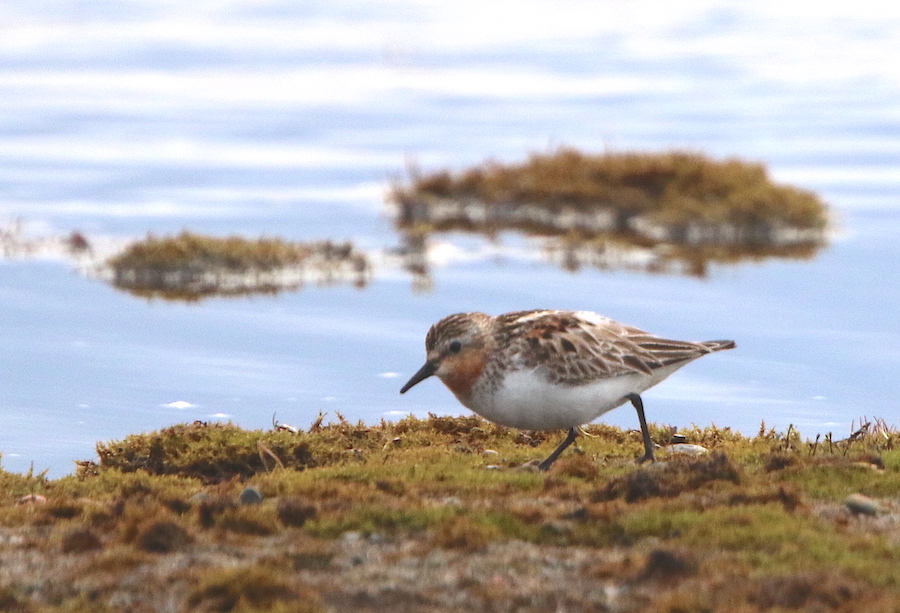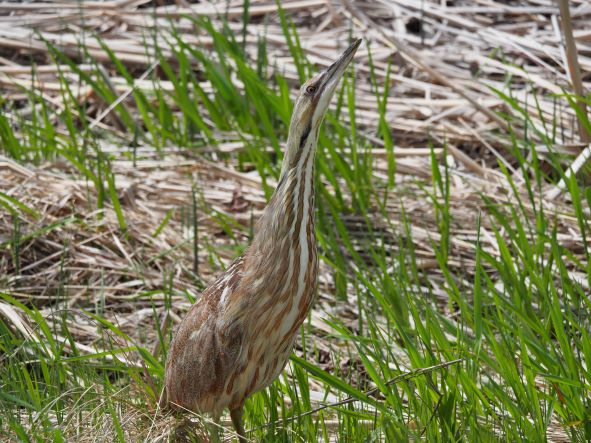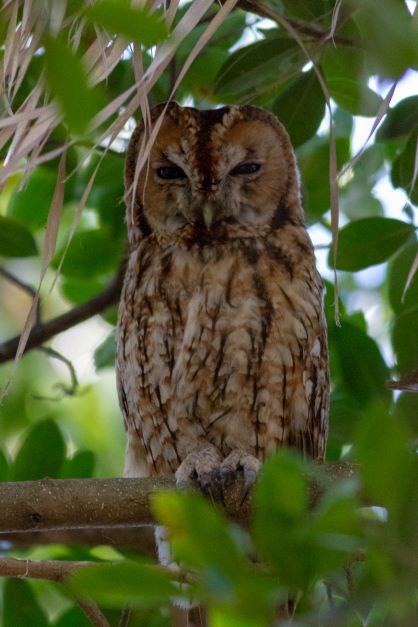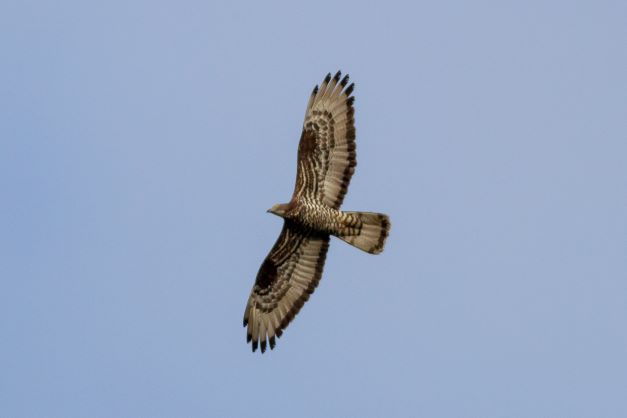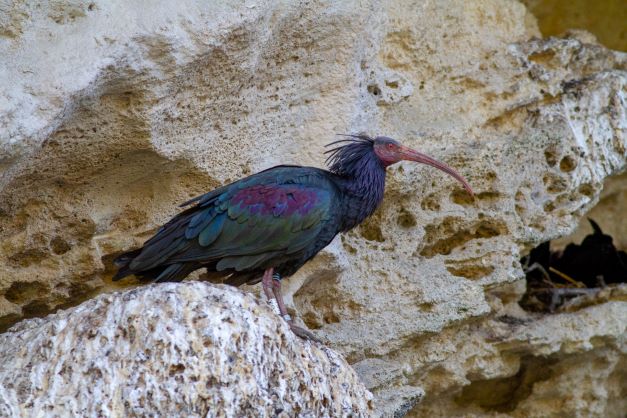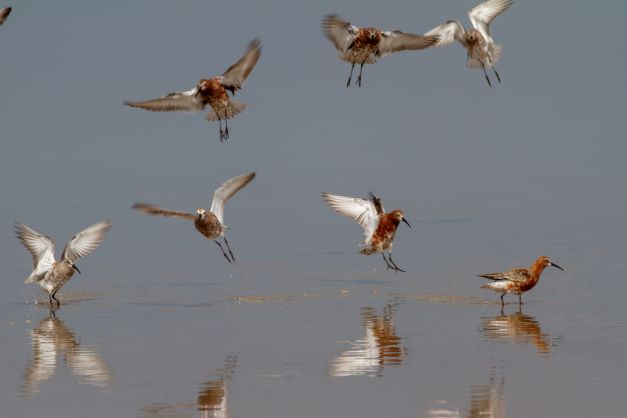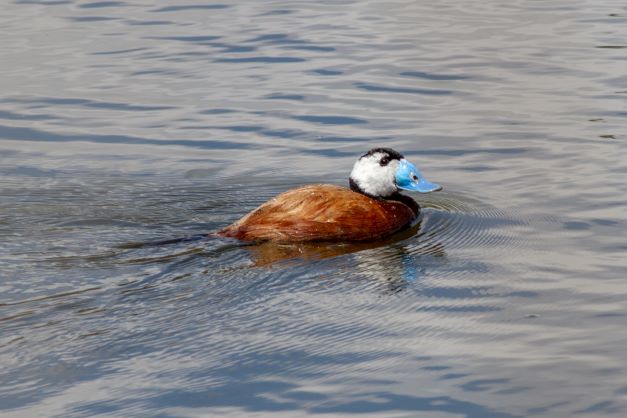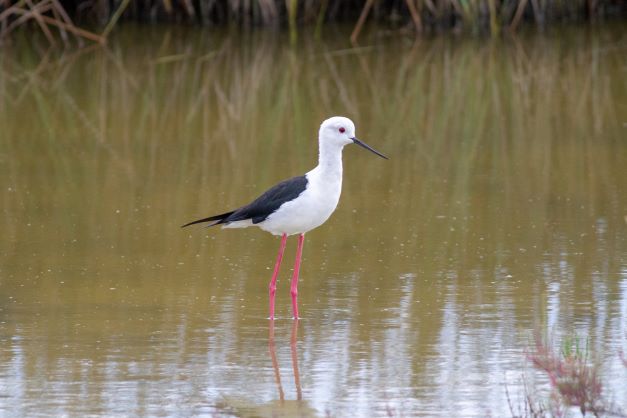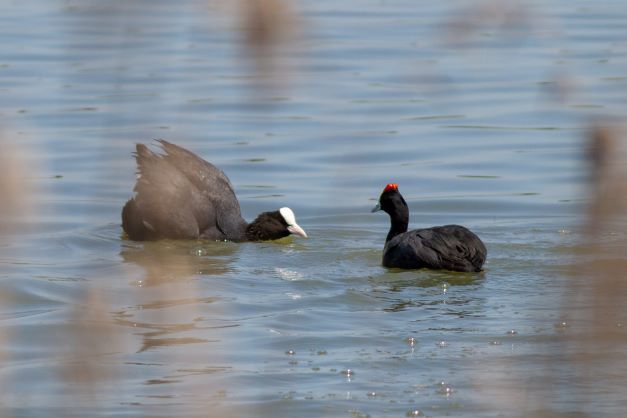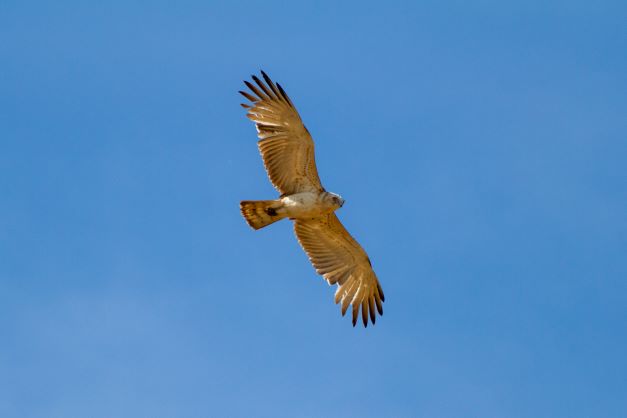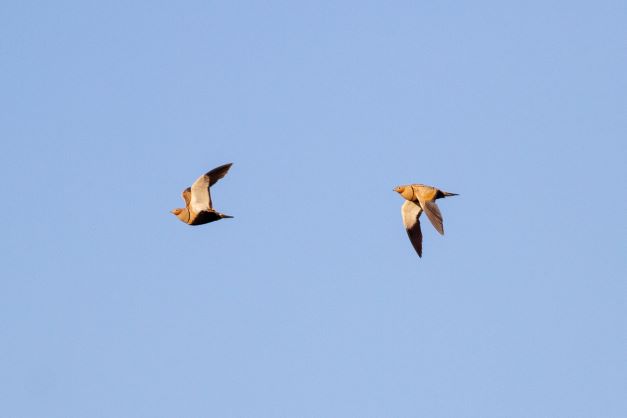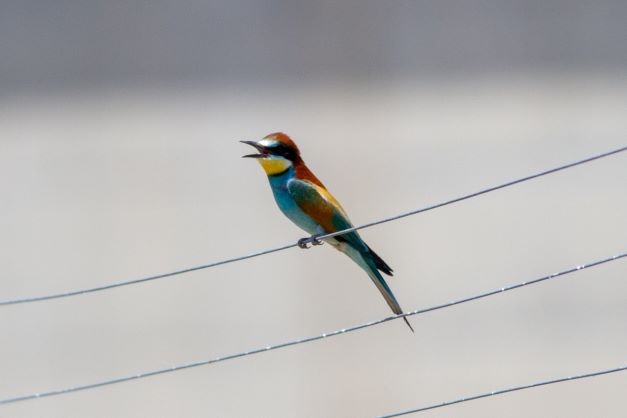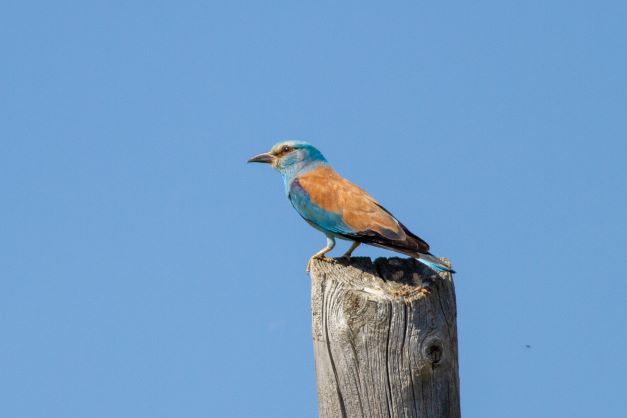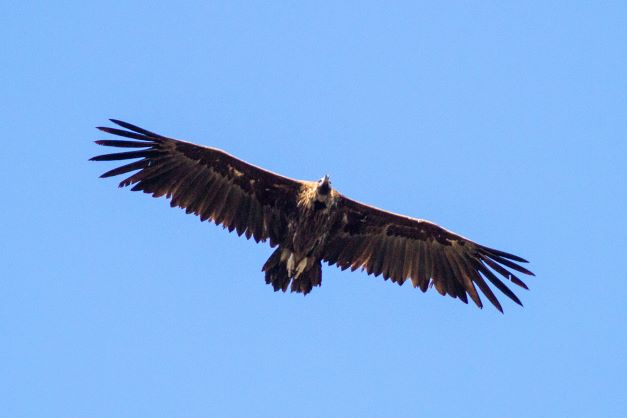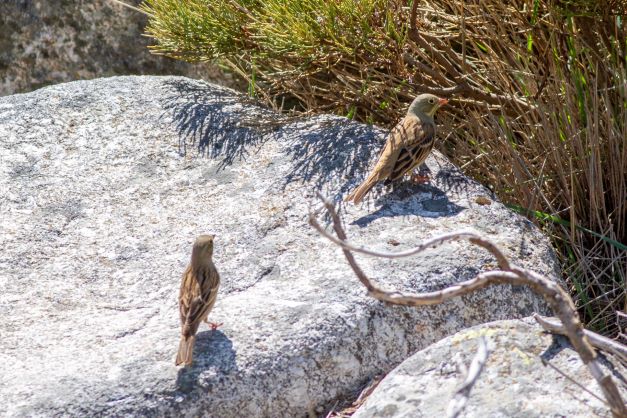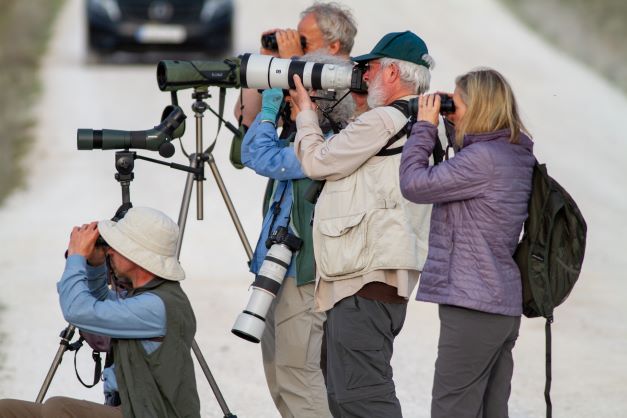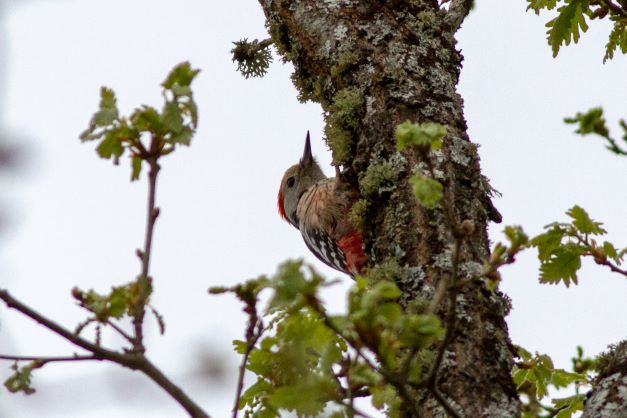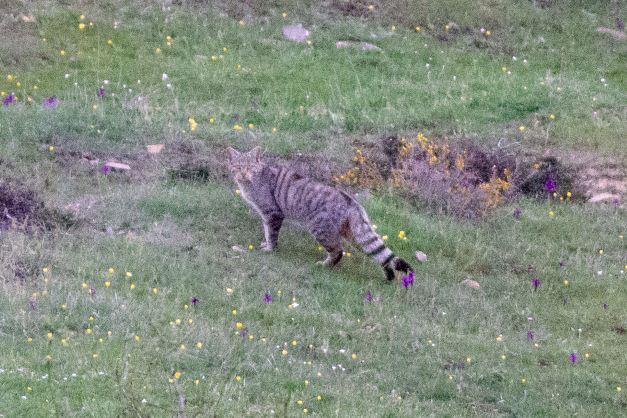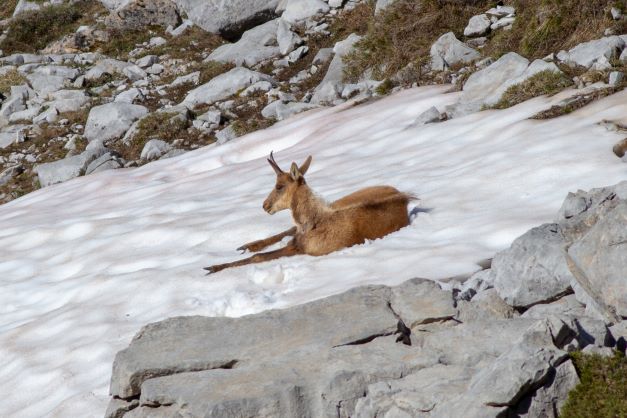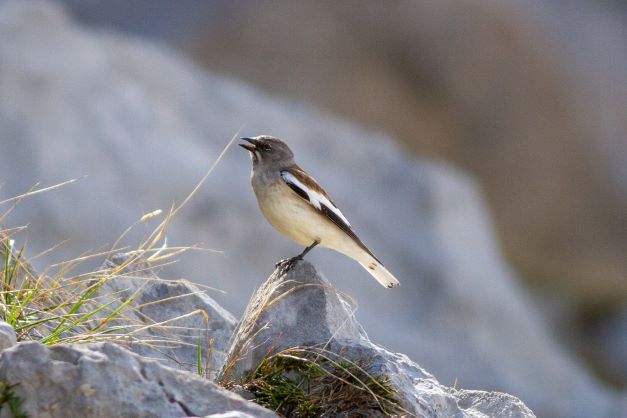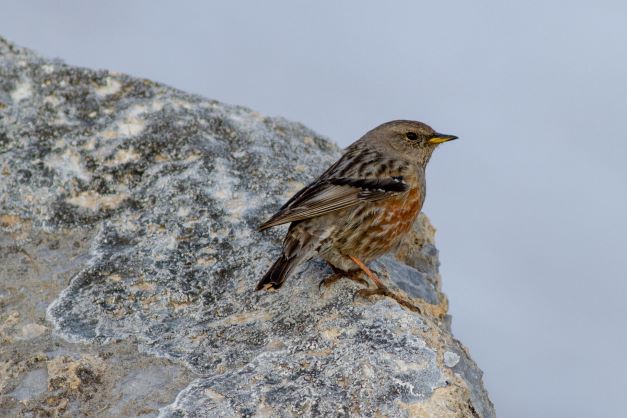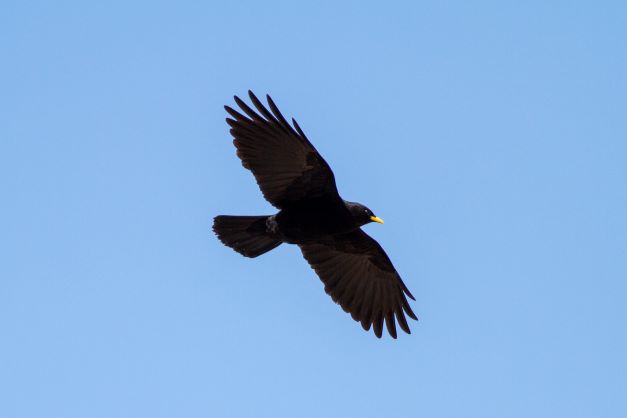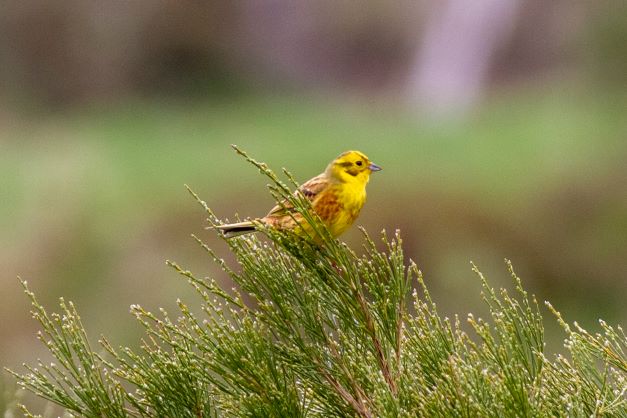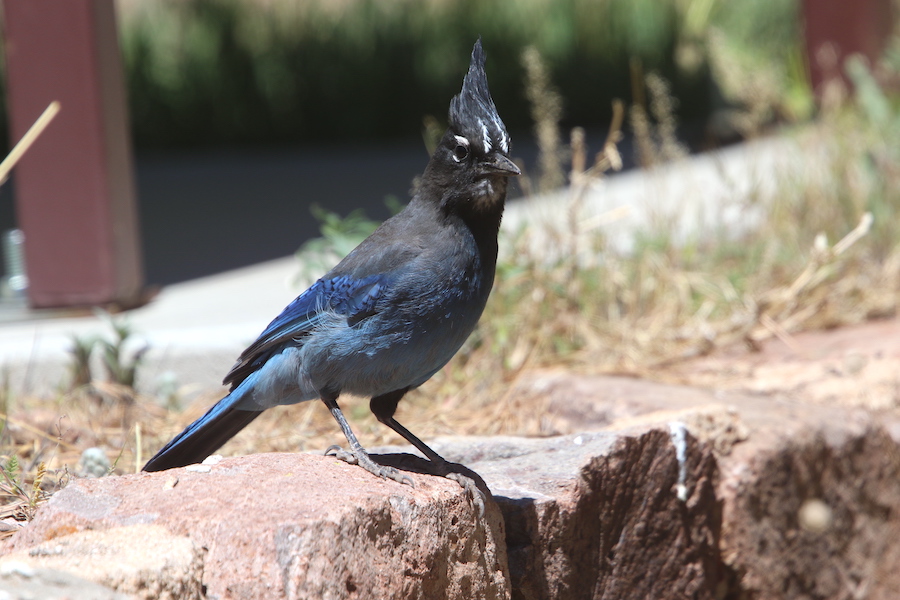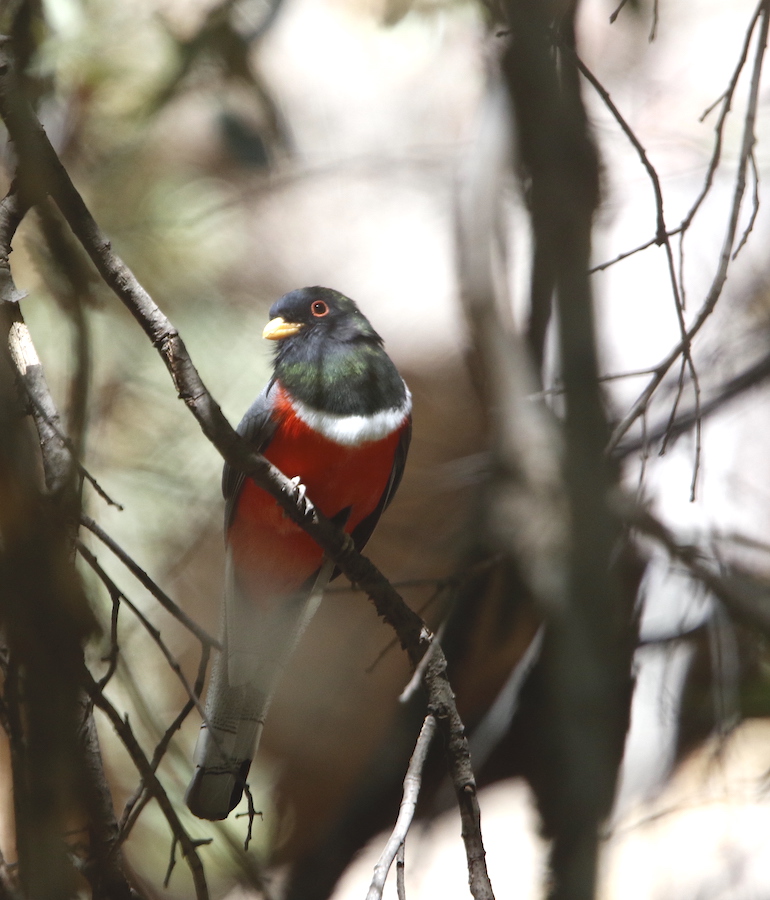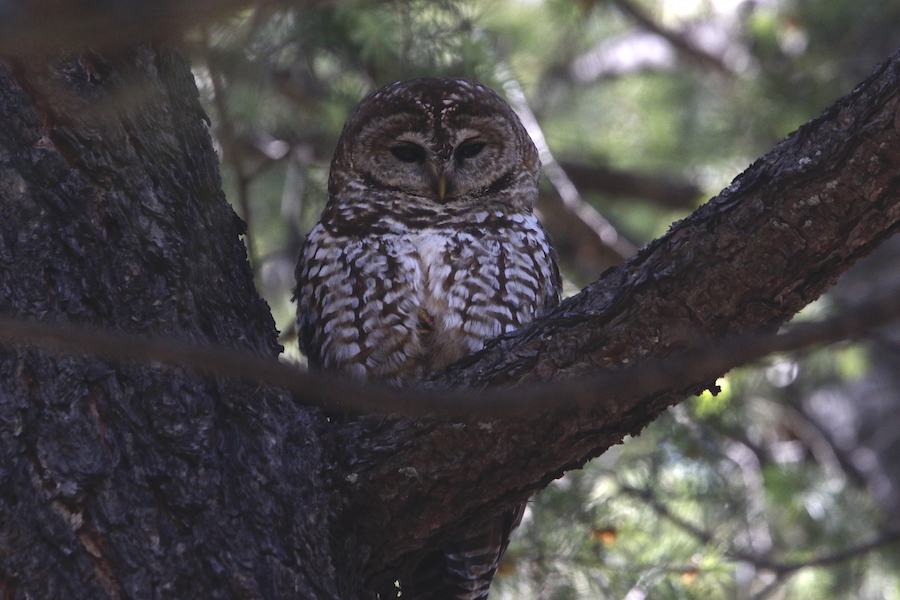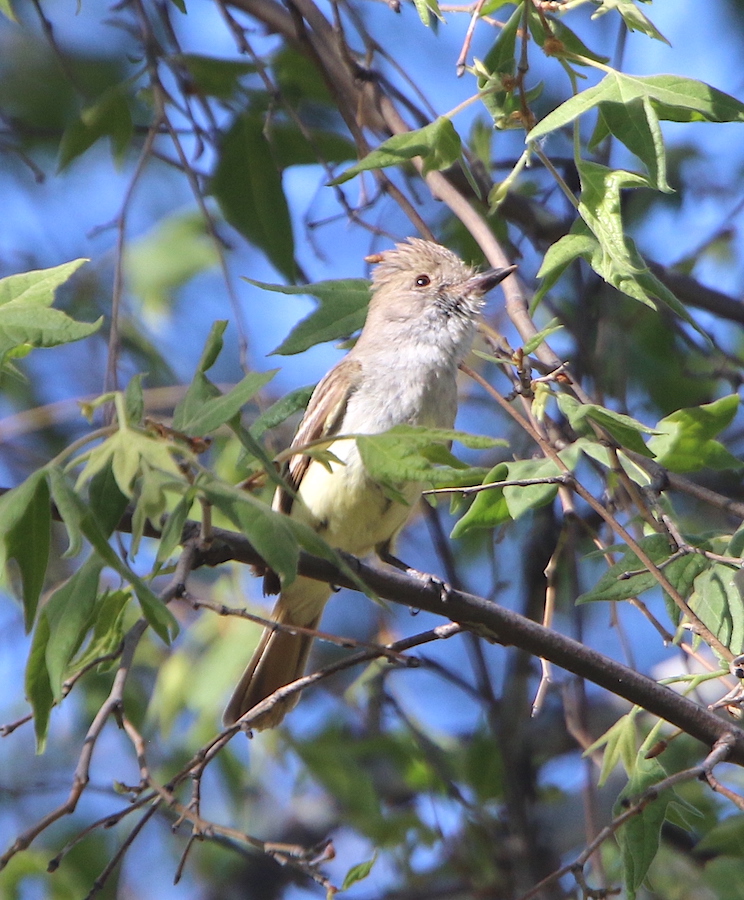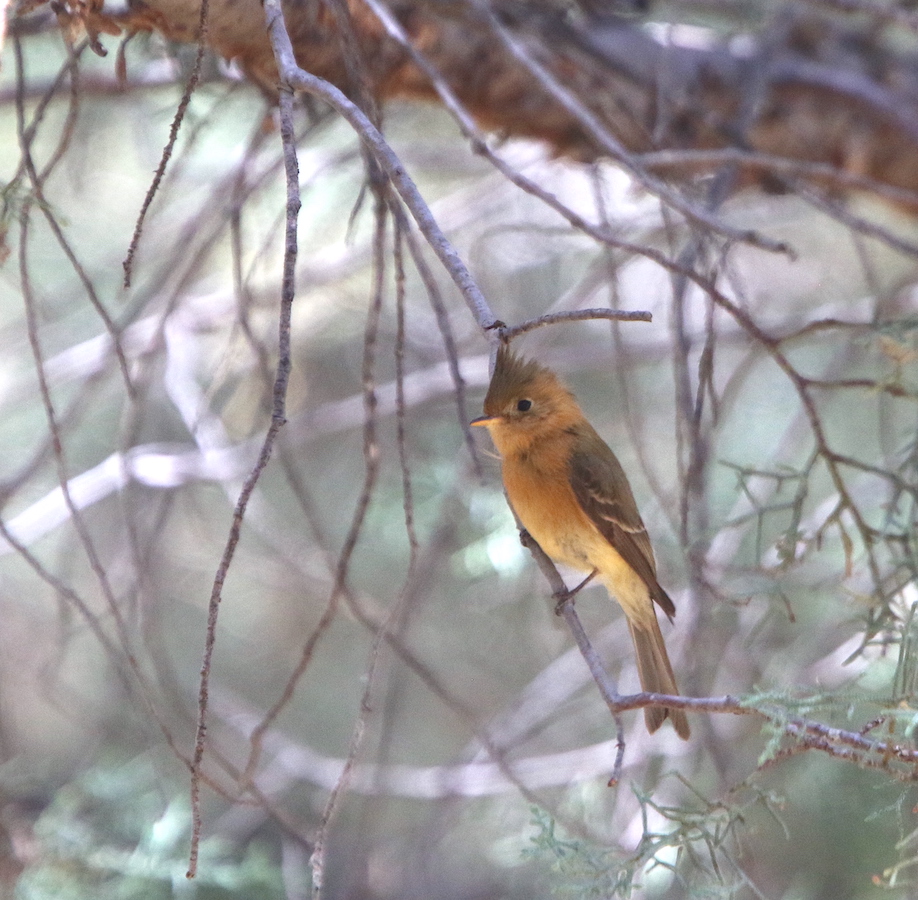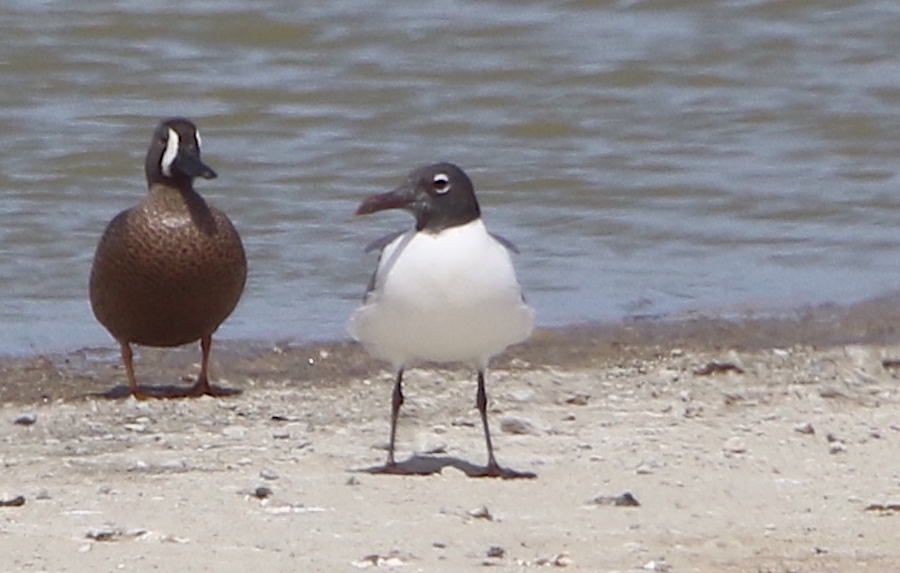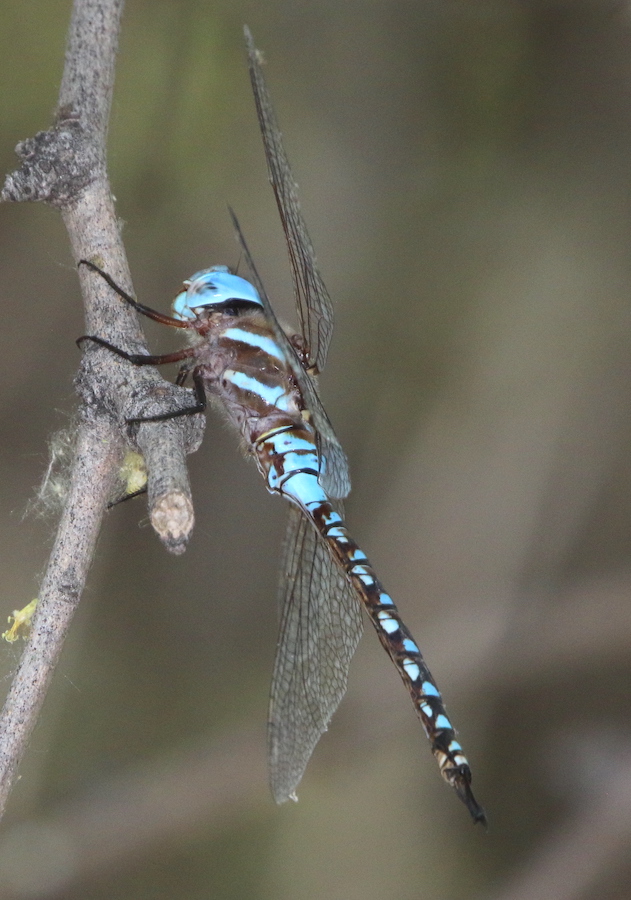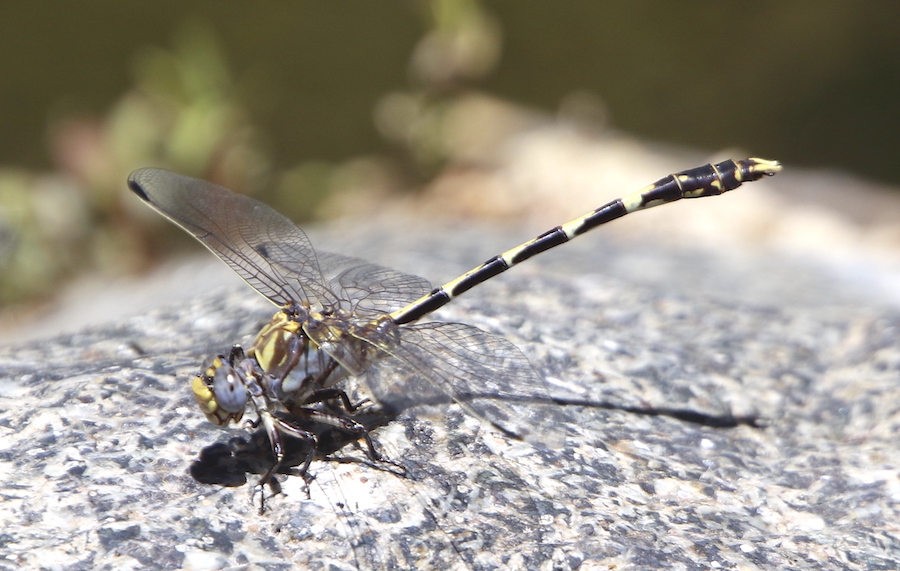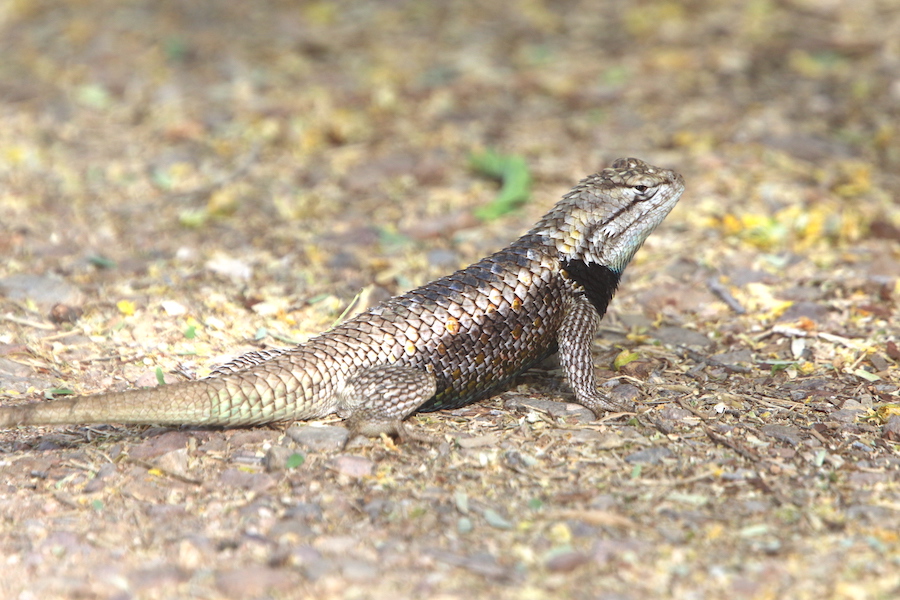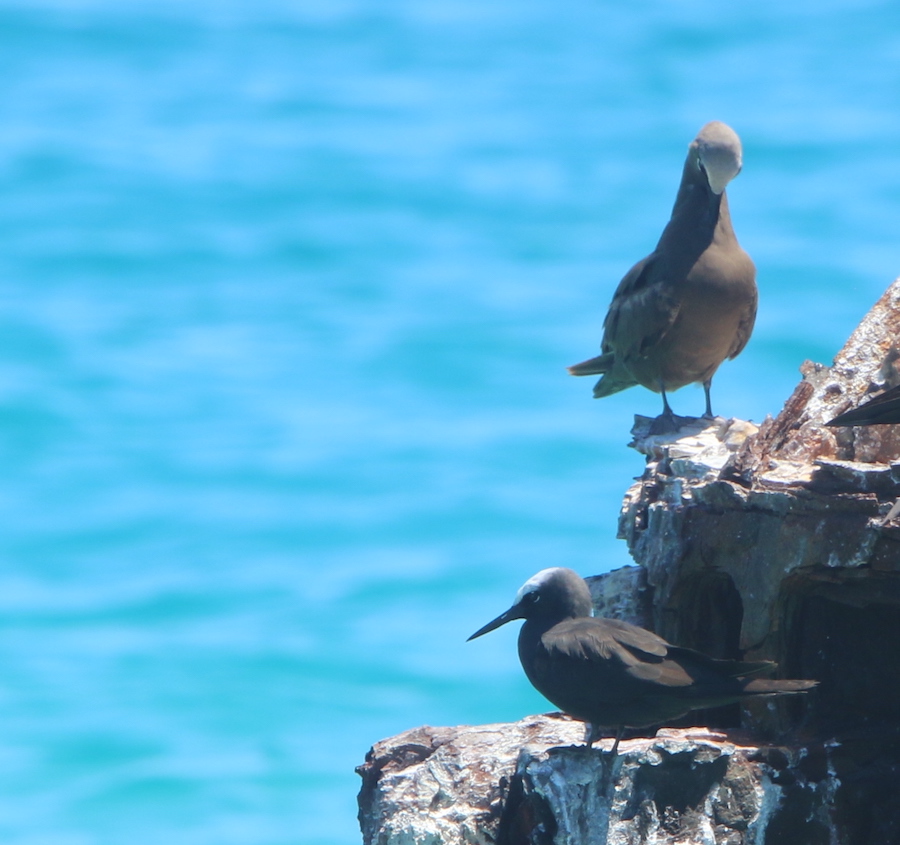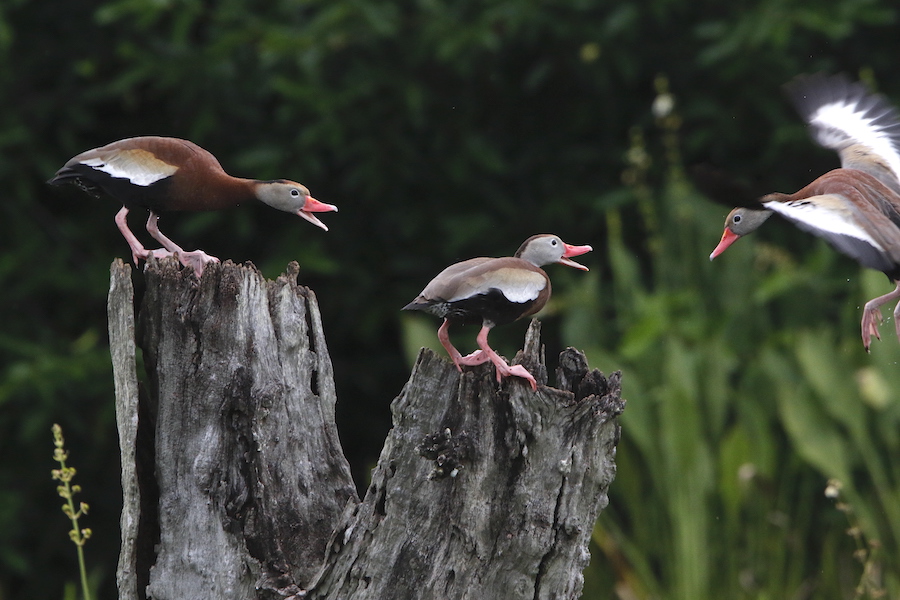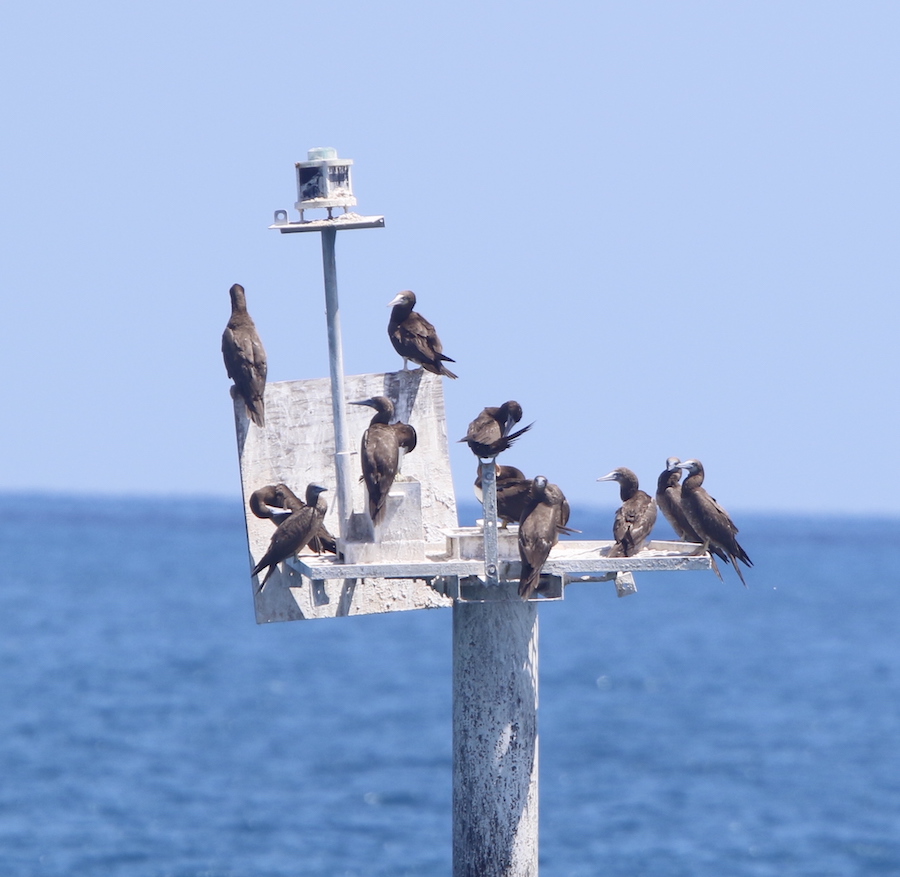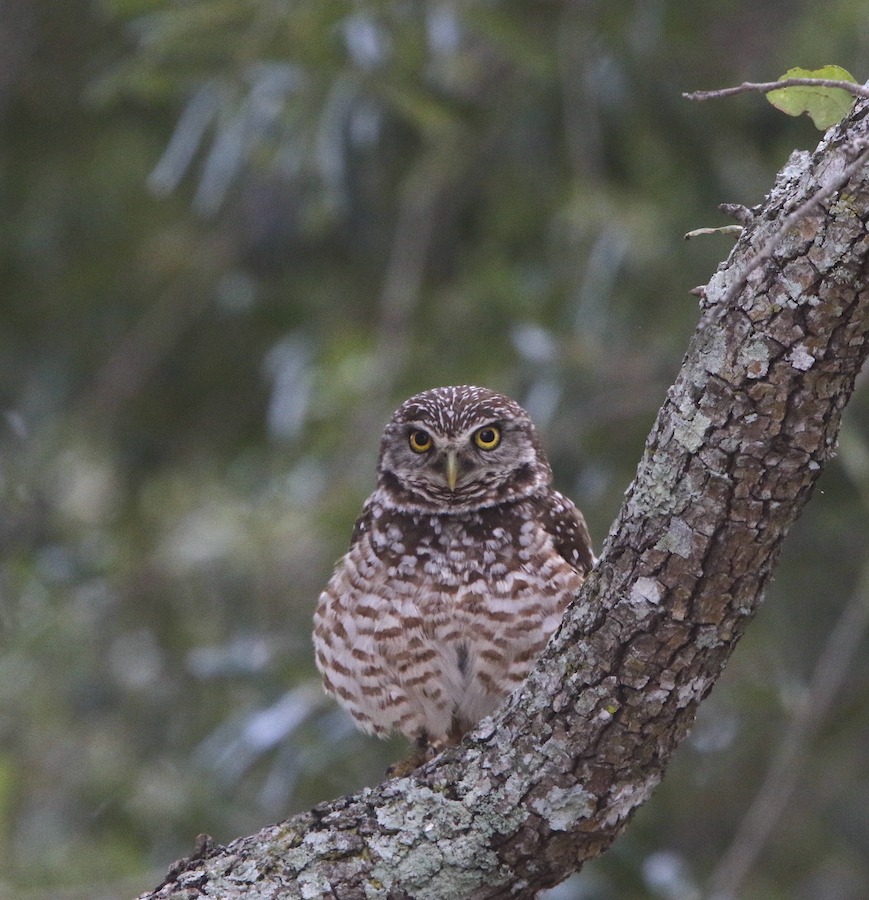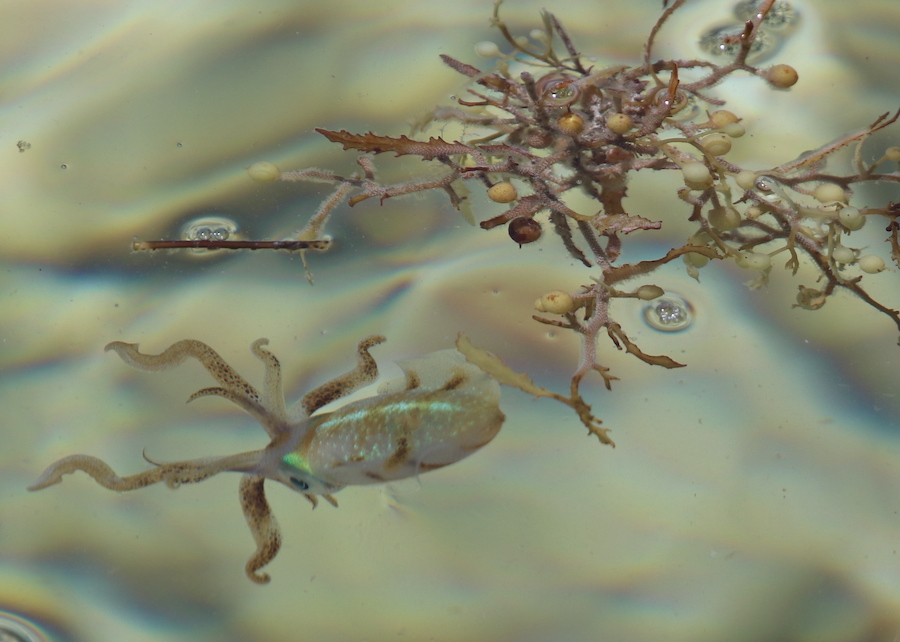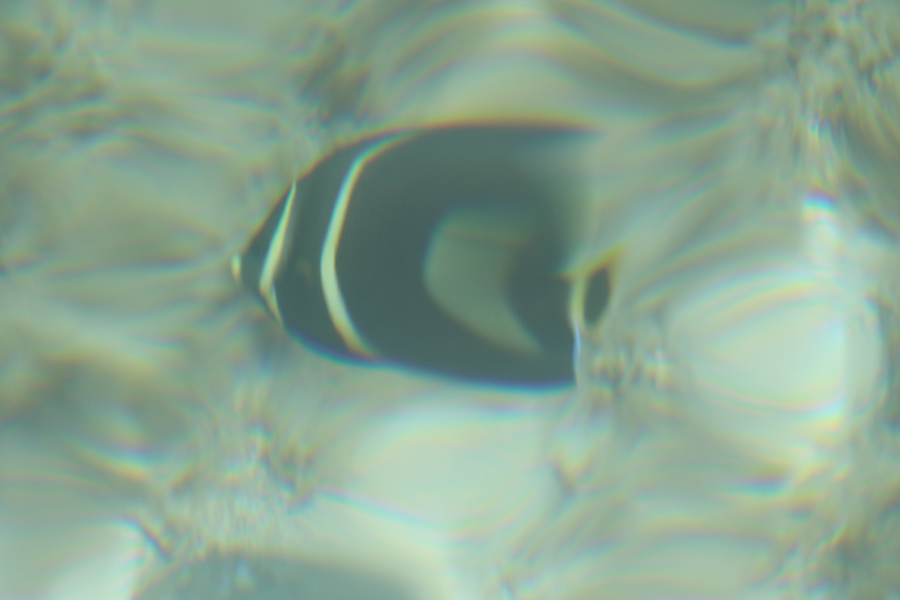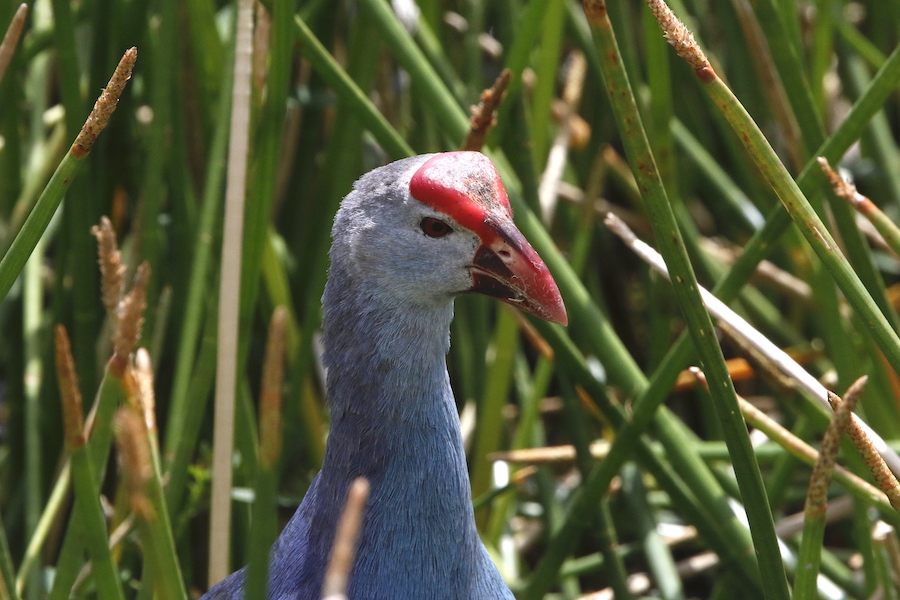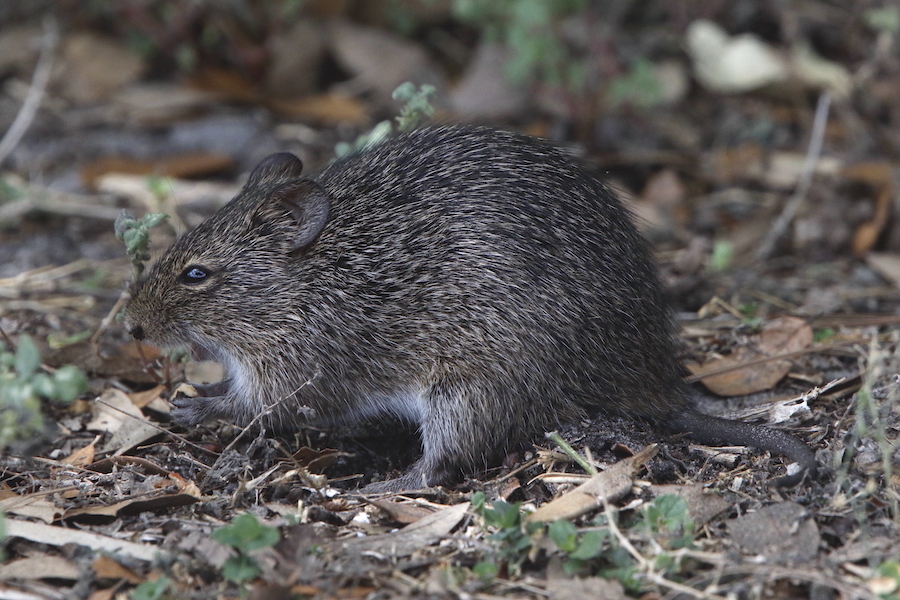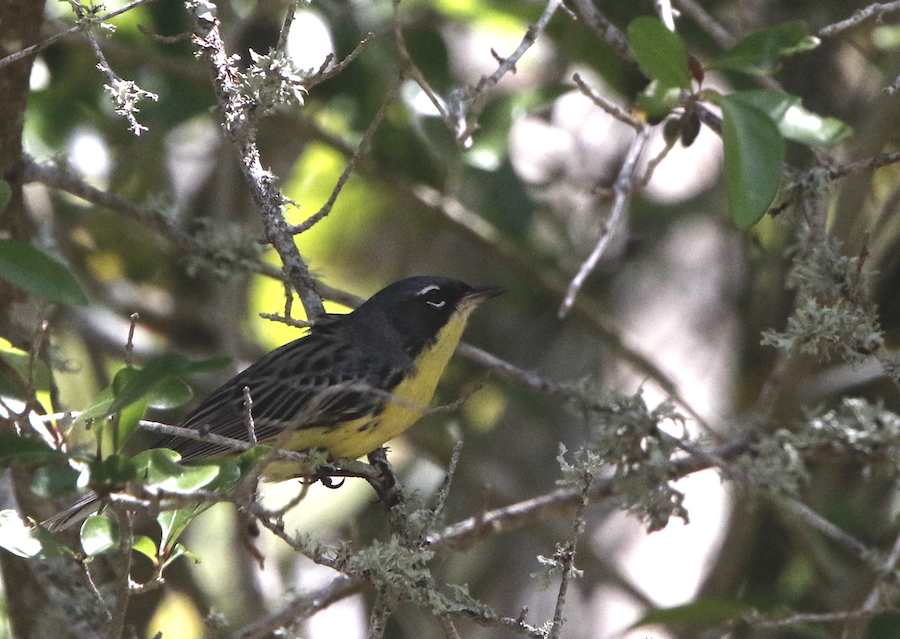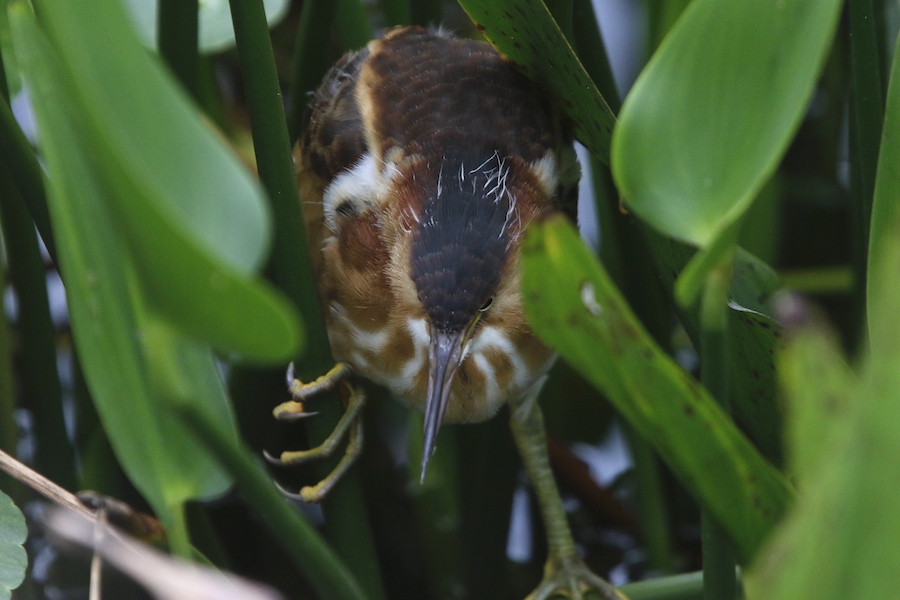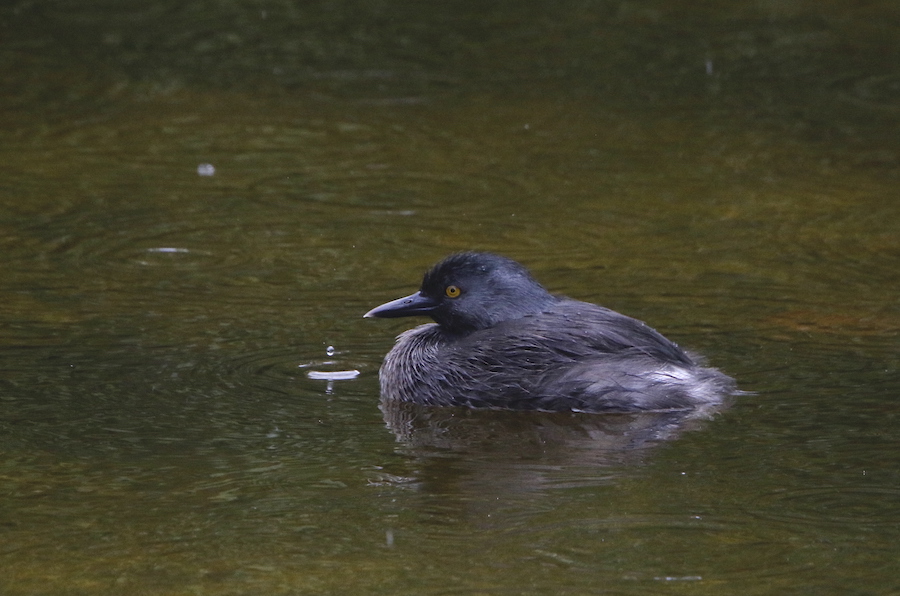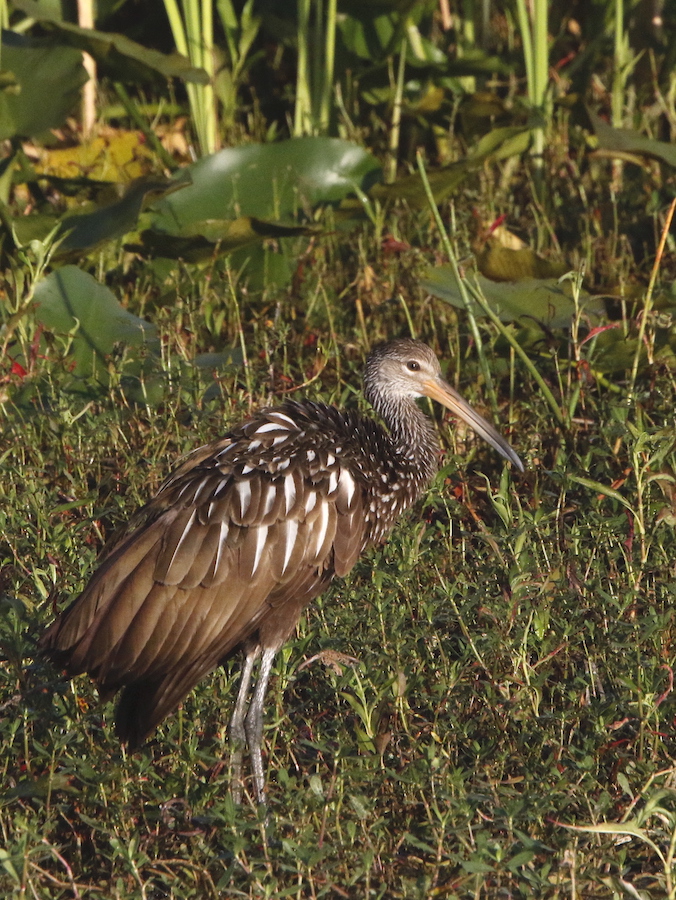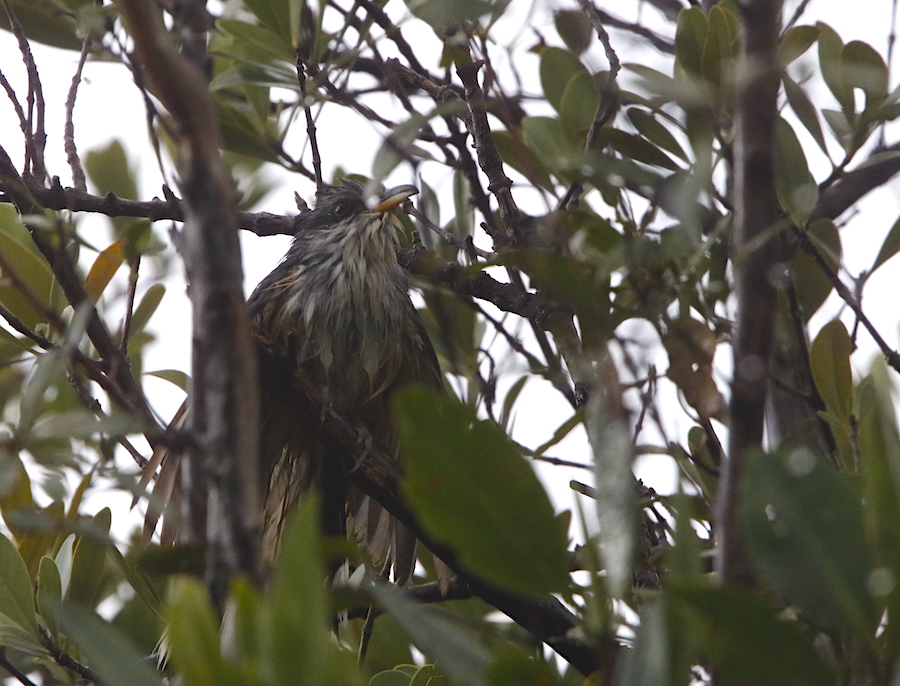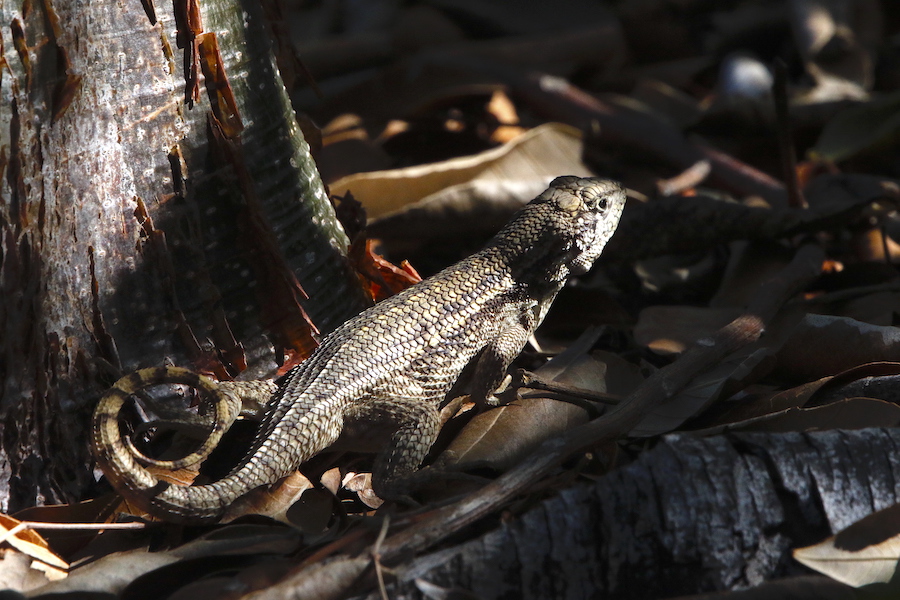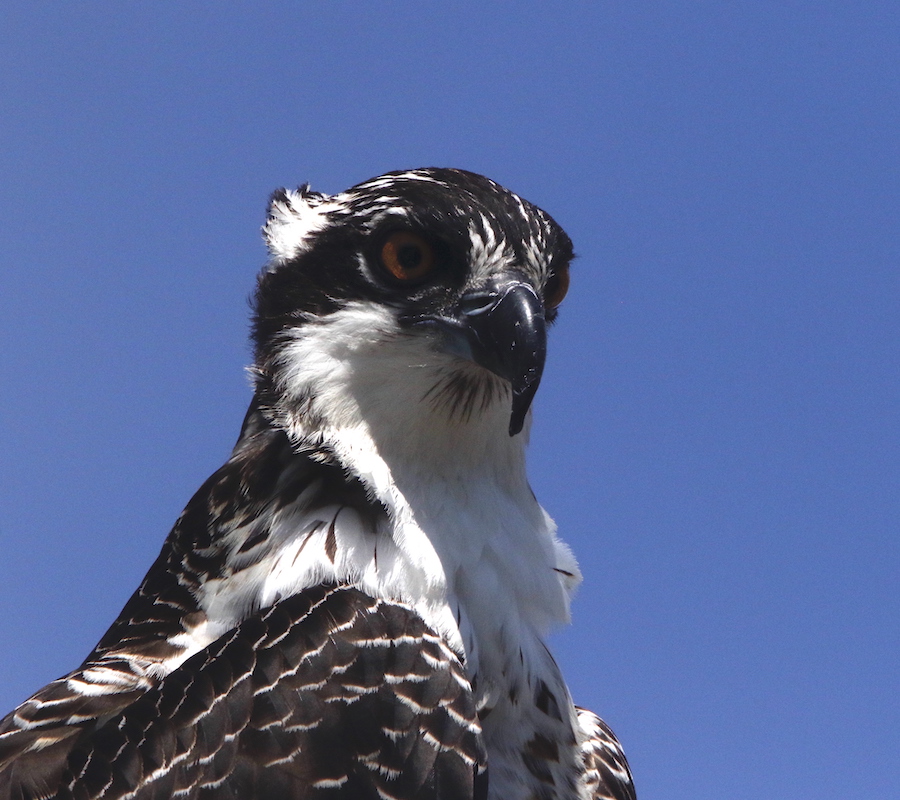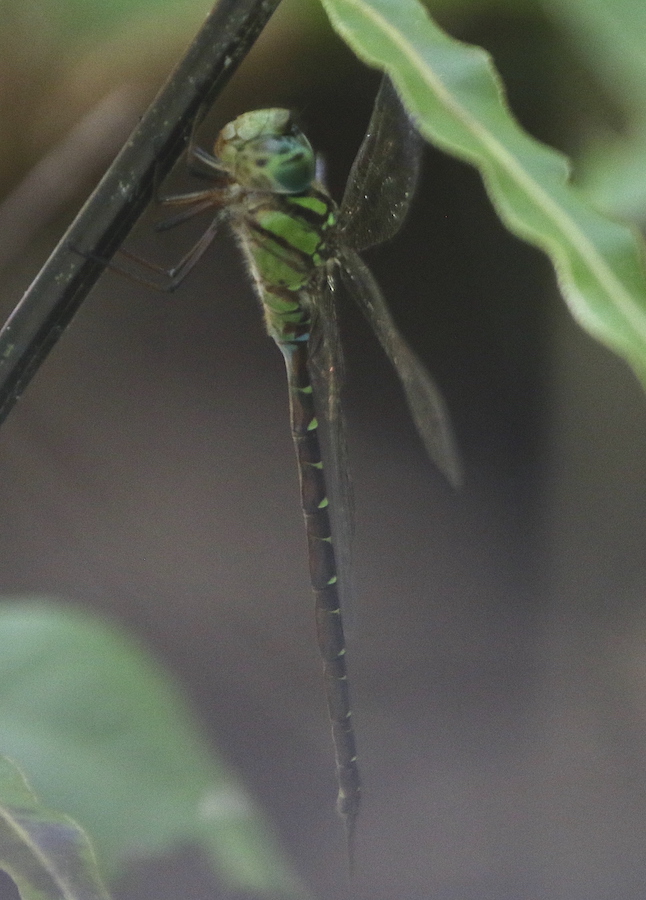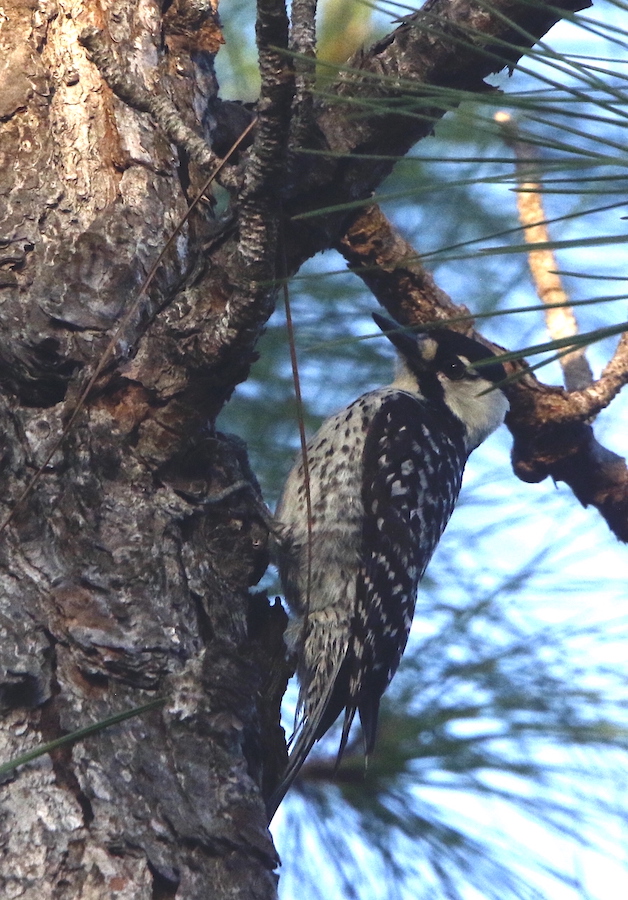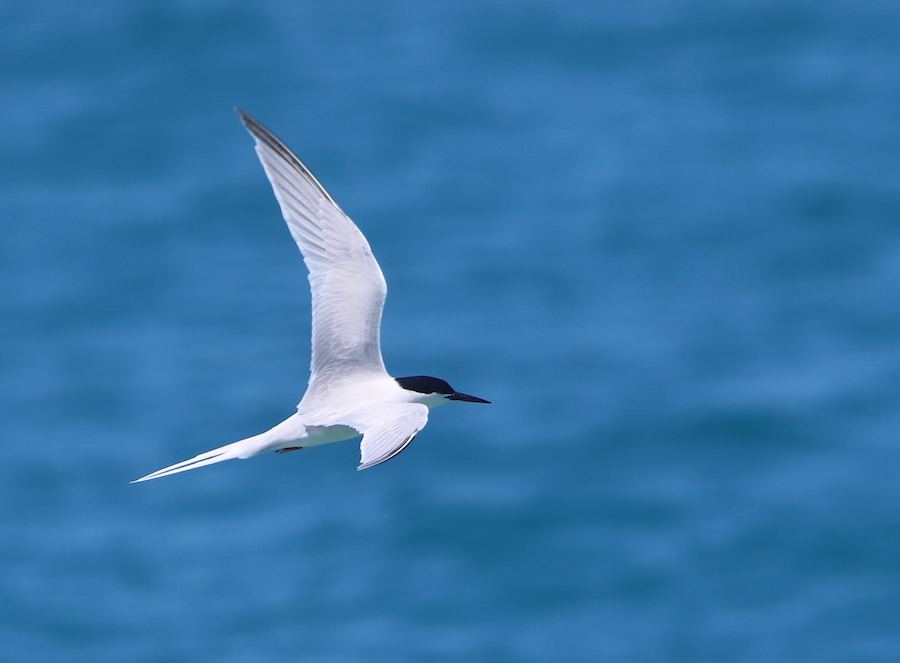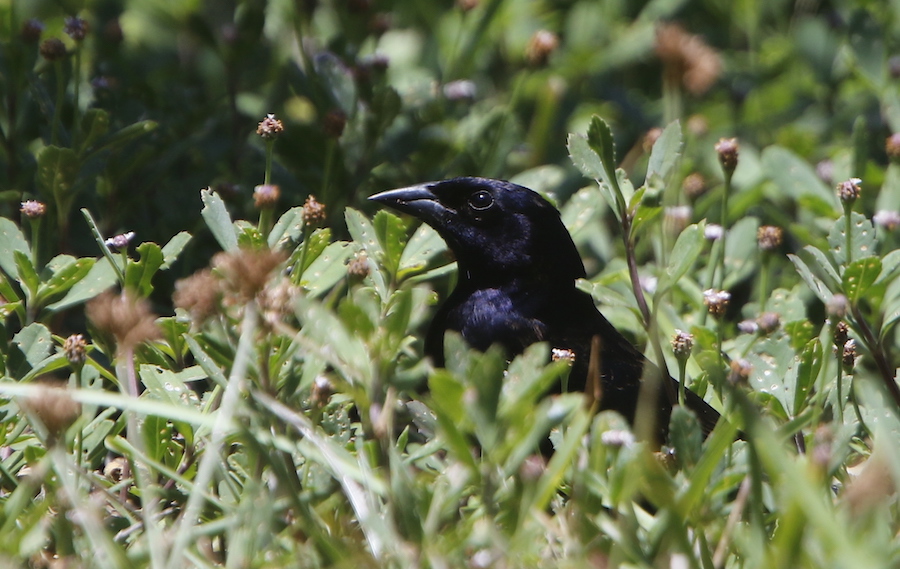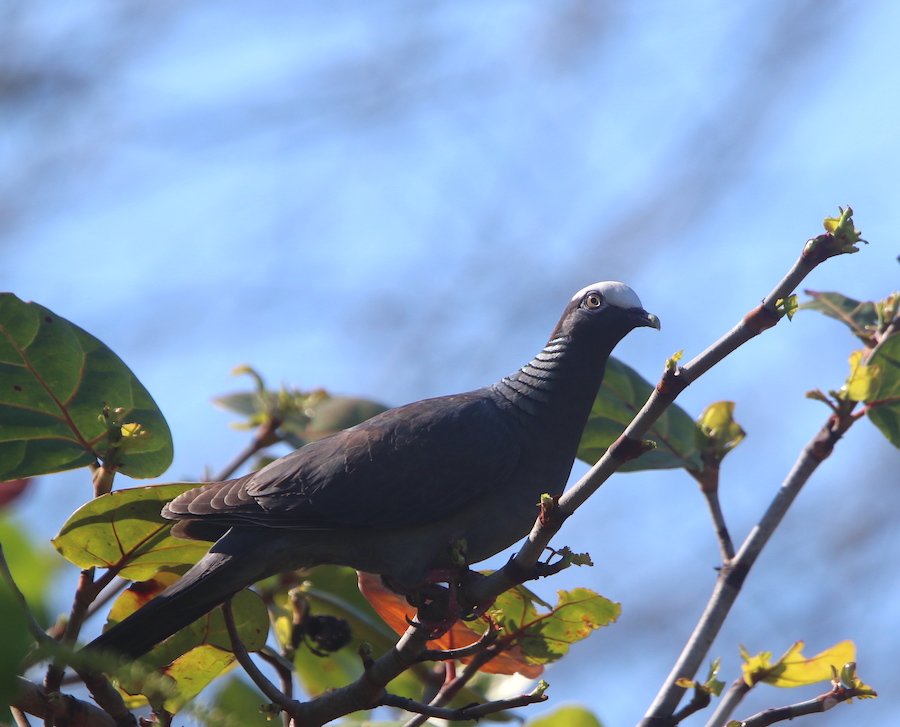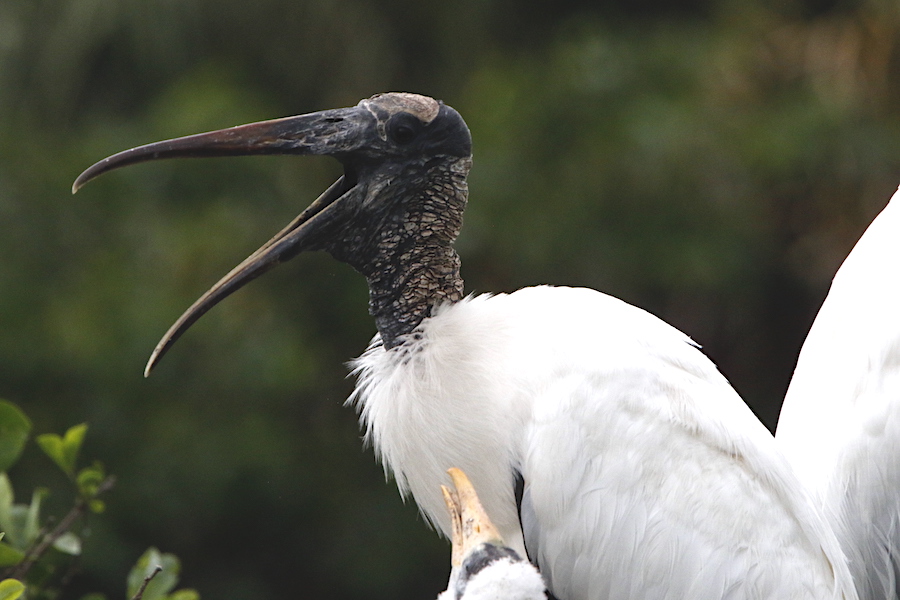From the Field
August 12:
Rich Hoyer reports from the Mato Grosso region of Brazil
The first of my two Mato Grosso tours this past month was an amazing explosion of birds, mammals, reptiles, and all things natural history. In the Cerrado ecoregion of Chapada dos Guimarães, a field with over 40 Greater Rheas was followed by a close sighting of the always spectacular Red-legged Seriemas was a favorite of the tour.
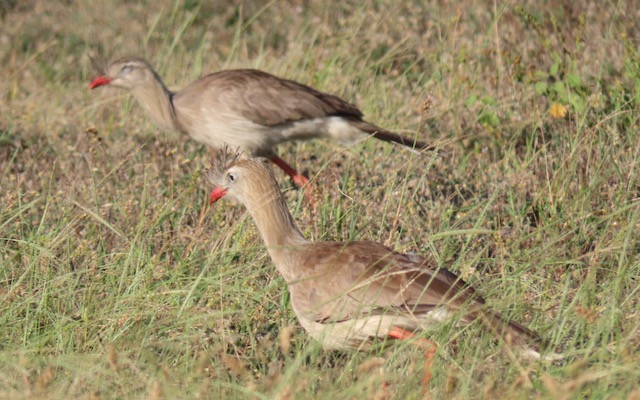
Our four full days in the Amazonian rainforest at the incomparable Cristalino Jungle lodge was far too short to experience the full diversity, but we fared very well, seeing a rare Crested Eagle from one of the two canopy towers.
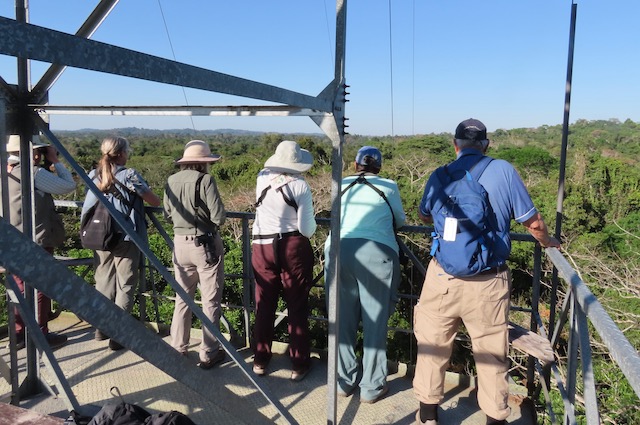
We also were treated to an afternoon bathing party of normally hard-to-find forest understory birds, such as the regional endemic Bare-eyed Antbird.
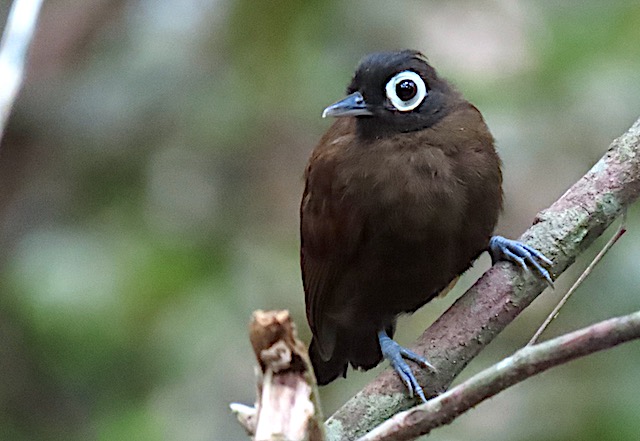
We then moved to the Pantanal, an ecoregion of woods, fields, lakes, rivers, and marshes that was packed full of wildlife. We had views of five jaguars our first morning, one being the well-known female Medrosa, who was still roaming around with her cubs from the previous year.
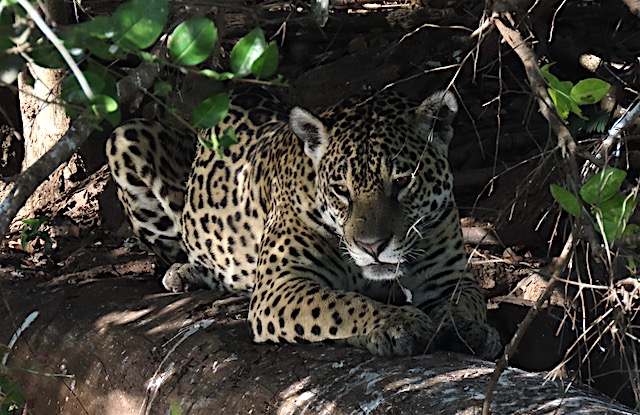
It’s hard to imagine a birds more stunning than the many Sunbitterns, Hyacinth Macaws, and Yellow-billed Cardinals we saw in the Pantanal, but a Scarlet-headed Blackbird right next to the road was hard to beat.
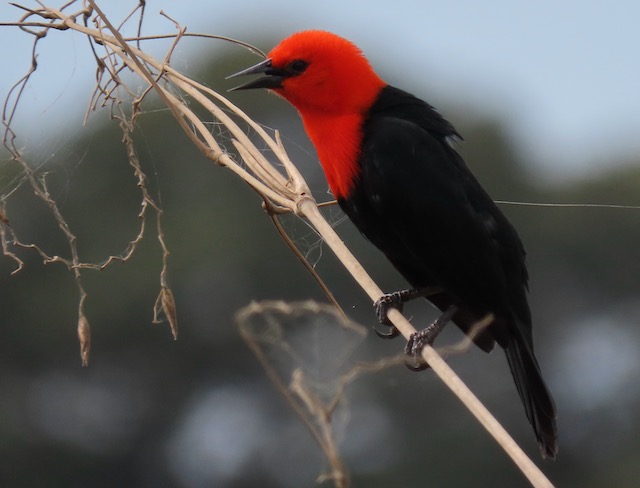
Our fourth utterly different ecosystem was the Atlantic Rainforest of the Iguazú area just across the border into Argentina. It had been a few weeks since a cold front had come through, and butterflies were at their peak in numbers, with stunning puddle parties diverting our attention from the birds again and again.
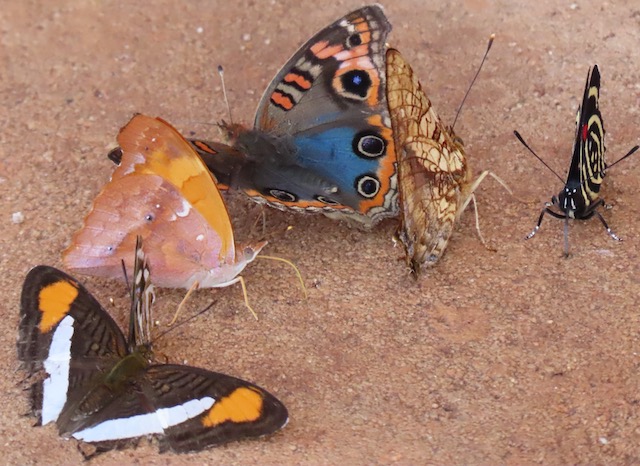
We certainly saw the spectacular falls (amongst throngs of mostly Argentinian tourists) but some birds still took center stage, such as Black-fronted Piping-Guan, Sharp-tailed Streamcreeper, Plush-crested Jays, and an intently feeding Robust Woodpecker in the forest understory.
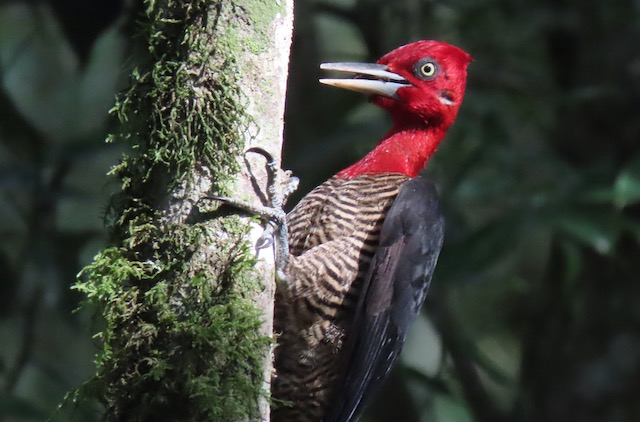
July 25:
Rich Hoyer reports from Galapagos
A very happy group of participants enjoyed our first Galapagos cruise in six years, and what a marvelous tour it was. Walks on the various islands featured a lengthy mating by two Swallow-tailed Gulls, mating Great Frigatebirds, and our gingerly stepping around nests of Blue-footed Boobies with young, placed right by the trail. We walked past pairs of breeding Waved Albatrosses while a show of flying birds in perfect light were joined by Nazca Boobies and Red-billed Tropicbirds at the cliff edge behind us. We were gobsmacked by Giant Tortoises, tickled by abundant and tame Yellow Warblers, and were intrigued by the stories of human settlement and early scientific explorations on the islands. We snorkeled nearly every day, seeing dozens of fascinating fish while swimming with Marine Iguanas, Green Sea Turtles, and playful Galapagos Sea Lions. We were very fortunate to have worked with the Nemo III staff who applied with the national park for a variance from their usual itinerary to cater to us birders, and we saw 29 of the possible 30 endemics, missing only Large Tree-Finch, which seems to be getting scarcer every year. We saw the elusive Galapagos Rail, the very localized Brujo Flycatcher and Galapagos Martin, and so many other fascinating critters, from the endemic Galapagos Saltbush Moth to a massive school of Common Bottlenose Dolphins around our boat. With an amazingly competent and very helpful boat crew, it was a trip to remember, and I look forward to my next tour in November 2024. https://wingsbirds.com/tours/galapagos-islands-1/
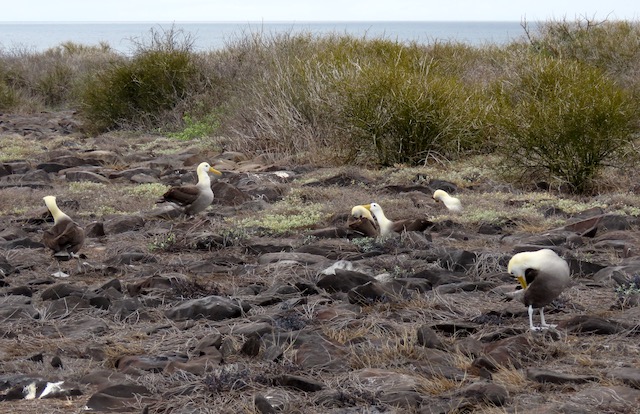
Waved Albatross
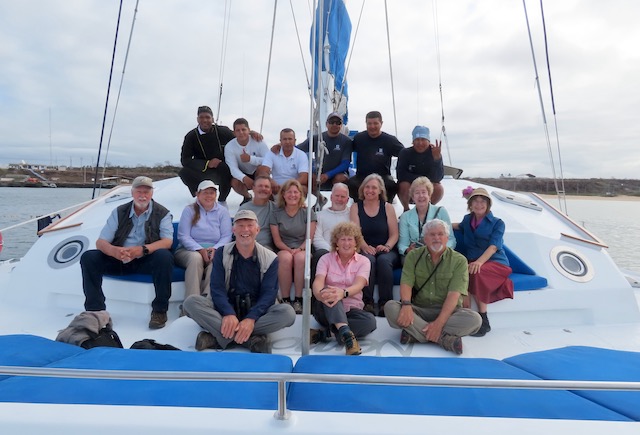
Happy crew on the Nemo III
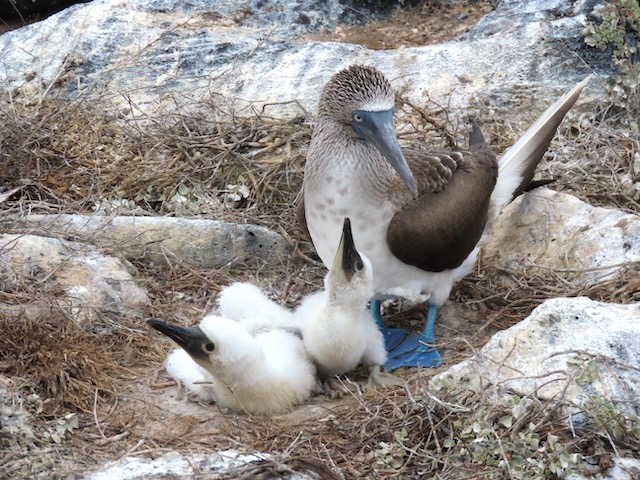
Blue-footed Booby
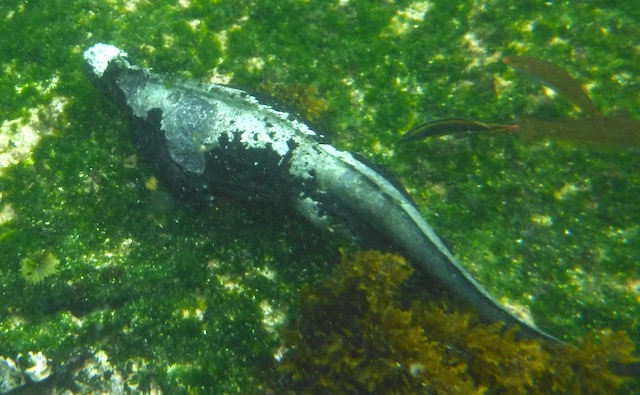
Marine iguana (Amblyrhynchus cristatus)
July 20:
Syke Haas reports "from the waves" off the West Coast of the US:
In April, WINGS BIRDING TOURS boarded the cruise ship Discovery in the Port of L.A. for a short but sweet voyage up the Pacific to Vancouver, BC. With two full and one half day at sea, we spent most of our time just off the continental shelf looking for rare seabirds, of which we found plenty of. A handful of Cook’s Petrels were observed off San Luis Obispo, while we were lucky enough to have 8 Hawaiian Petrels and 4 Laysan Albatrosses from mid-California up into southern Oregon. But the real stars of the show were the large numbers of Murphy’s Petrels we encountered with a total of 139 combined on our two full days at sea! Lots of other great seabirds though including Fork-tailed and Leach’s Storm-Petrels, Sooty, Short-tailed, Pink-footed and Black-vented Shearwaters, lots of Black-footed Albatrosses, all three Jaegers and flocks of migrating of Red-necked and Red Phalaropes as well as Sabine’s Gulls.
This ebird trip report will have the tour’s totals from this year. https://ebird.org/tripreport/51495
We’ll be running this highly popular tour again next spring aboard the cruise ship Eurodam beginning on April 24th, 2023. Click here to sign up for the tour! https://wingsbirds.com/tours/pacific-coast-seabird-cruises-from-southern-california-to-vancouver/
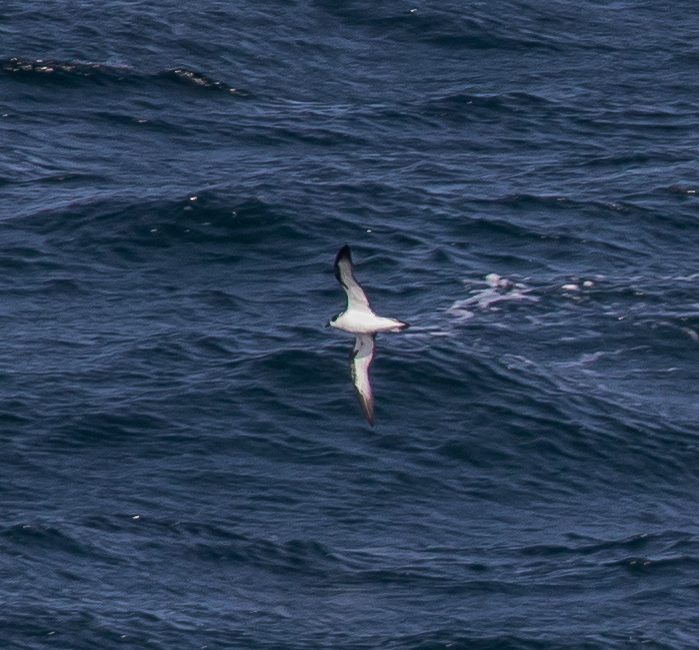
Hawaiian Petrel
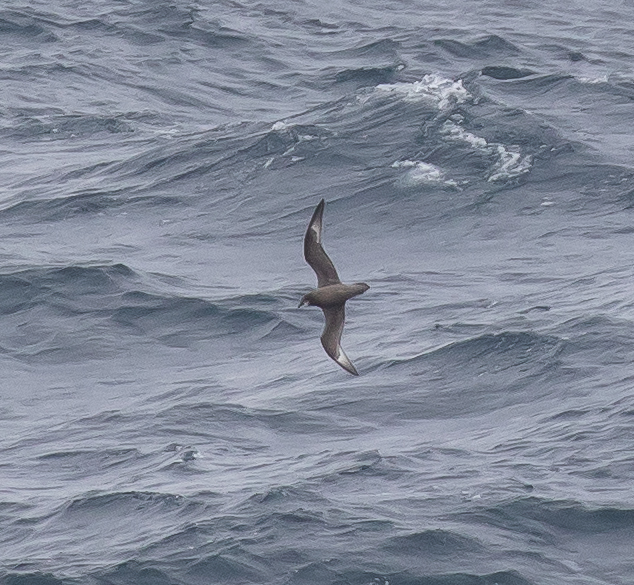
Murphy's Petrel
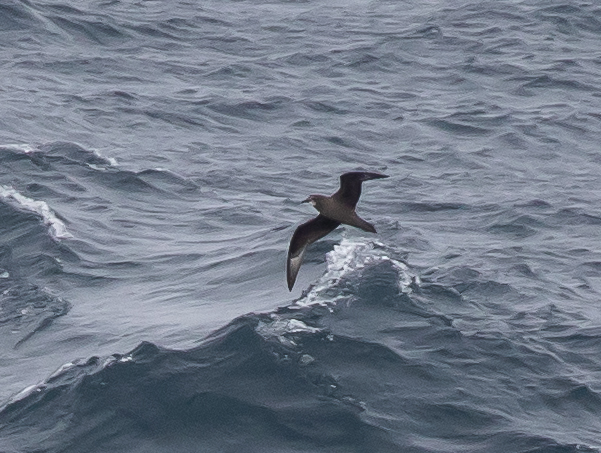
Murphy's Petrel
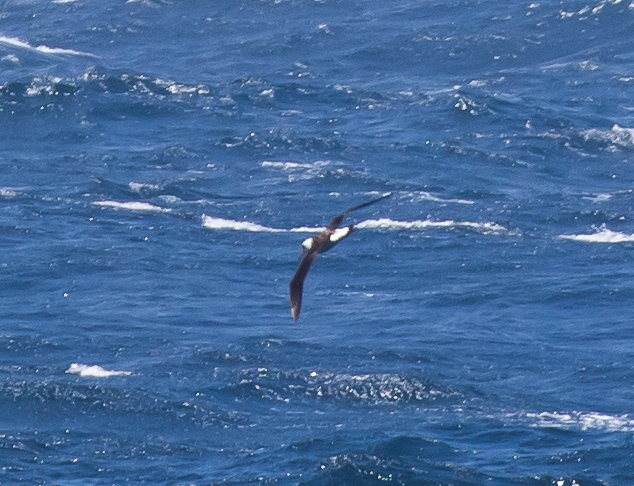
Laysan Albatross
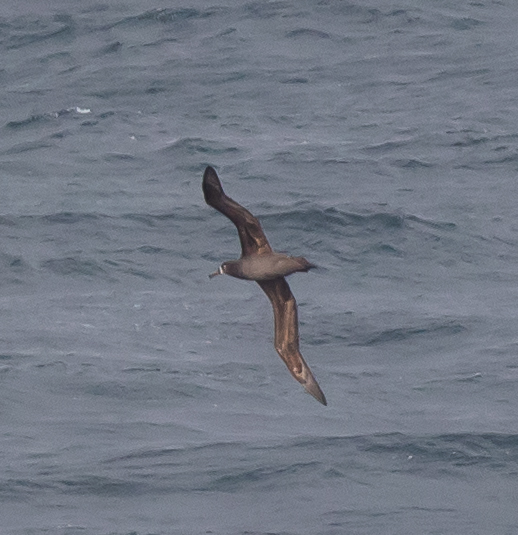
Black-footed Albatross
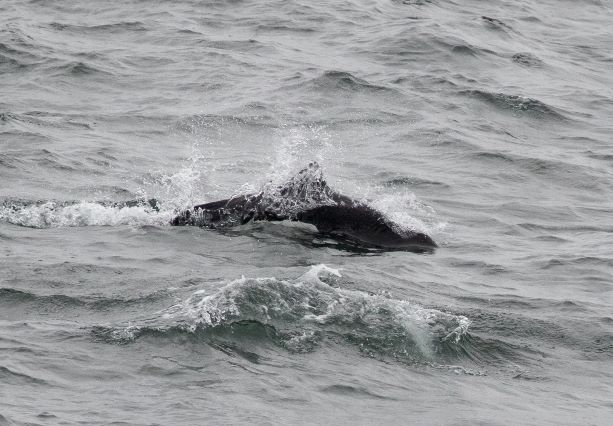
Dall's Porpoise
July 5:
Gavin Bieber reports from Alaska
Our 2022 Alaska Majesty tour really lived up to its name this year. Our scheduled trip out to the Pribilofs was cancelled at the last minute due to an island wide quarantine so we quickly came up with a short trip to Homer. The weather and scenery there were stunning, and our chartered boat trip out into Kachemak Bay was quite productive for close-range photos.
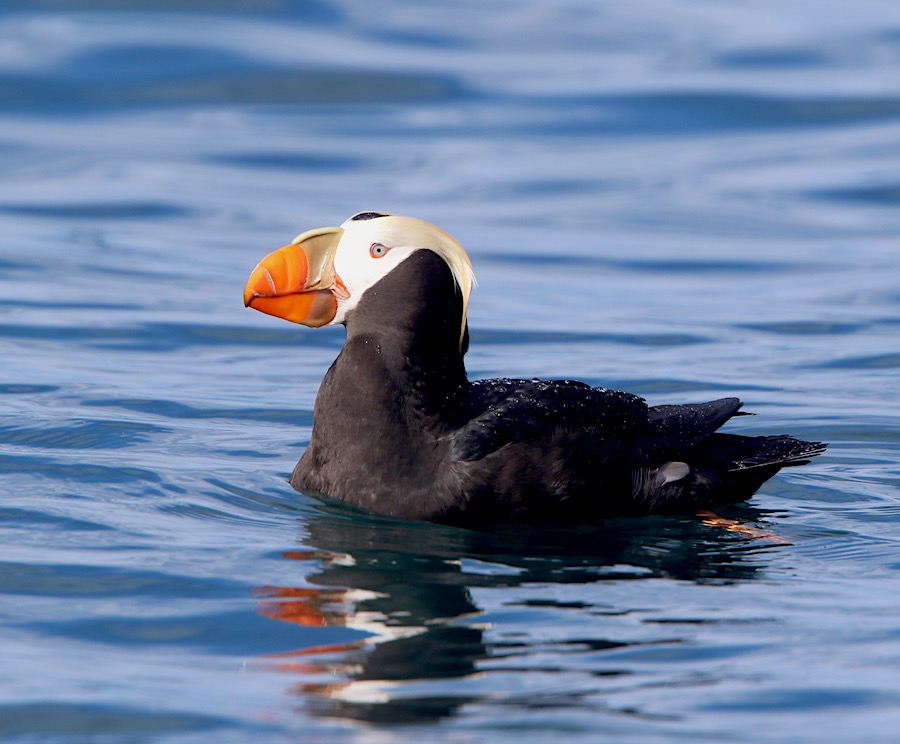
Tufted Puffin
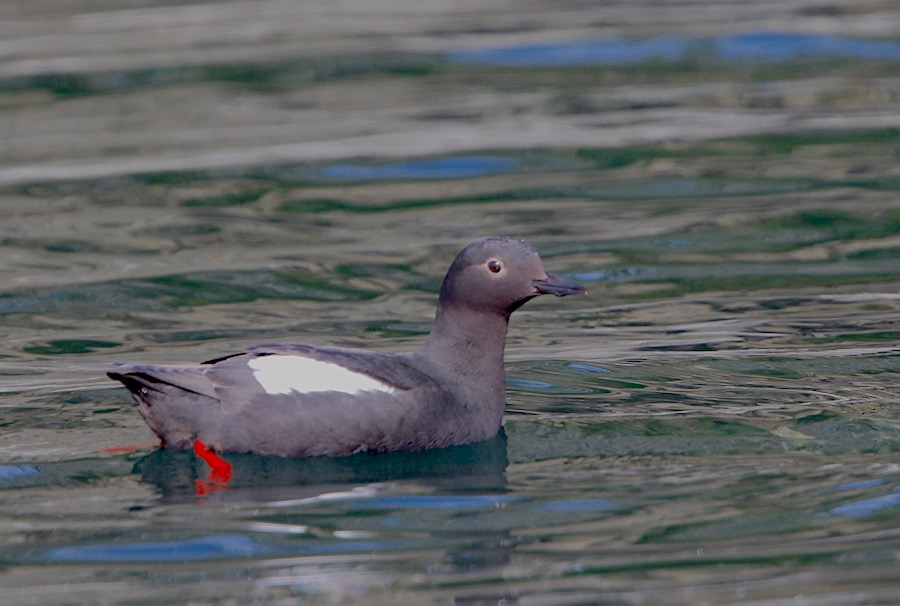
Pigeon Guillemot
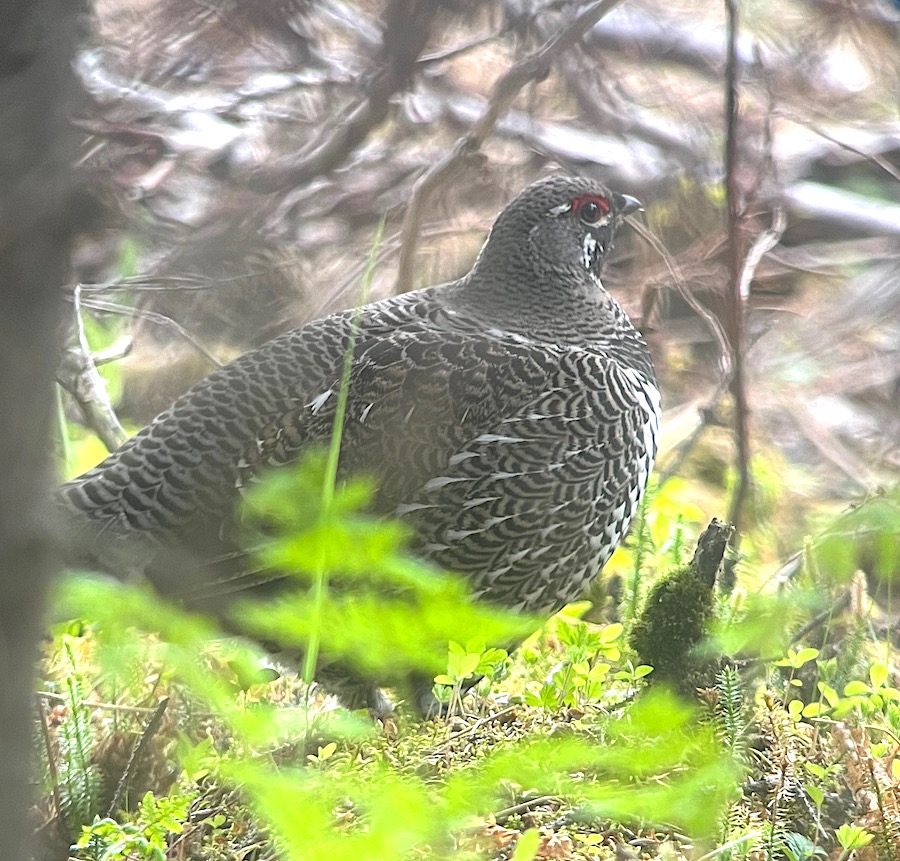
A ridiculously tame Spruce Grouse at the Wynn Nature Center was a nice bonus too!
Due to a landslide on the main Denali National Park road and Covid concerns on the park shuttle buses we opted to head to Fairbanks for the day instead.
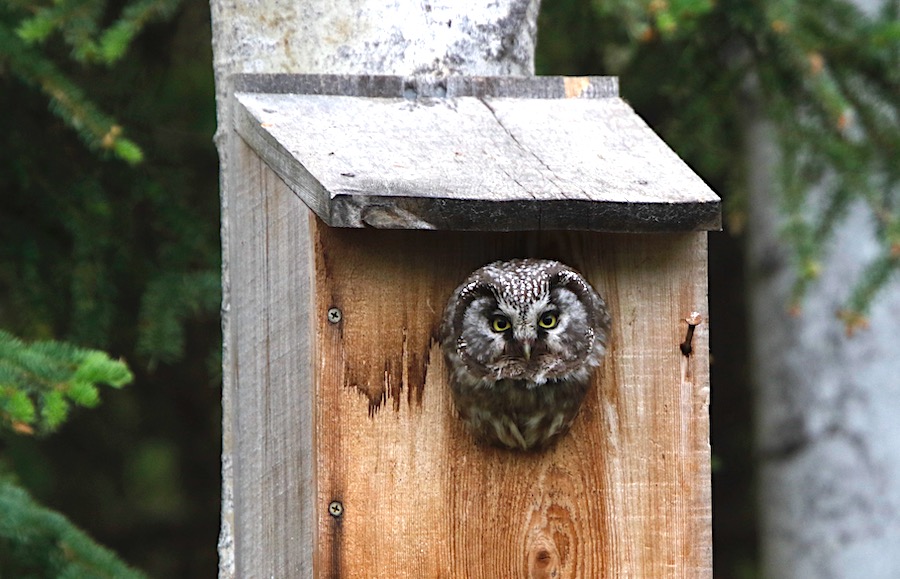
We were thrilled to spot a Boreal Owl in its nestbox,
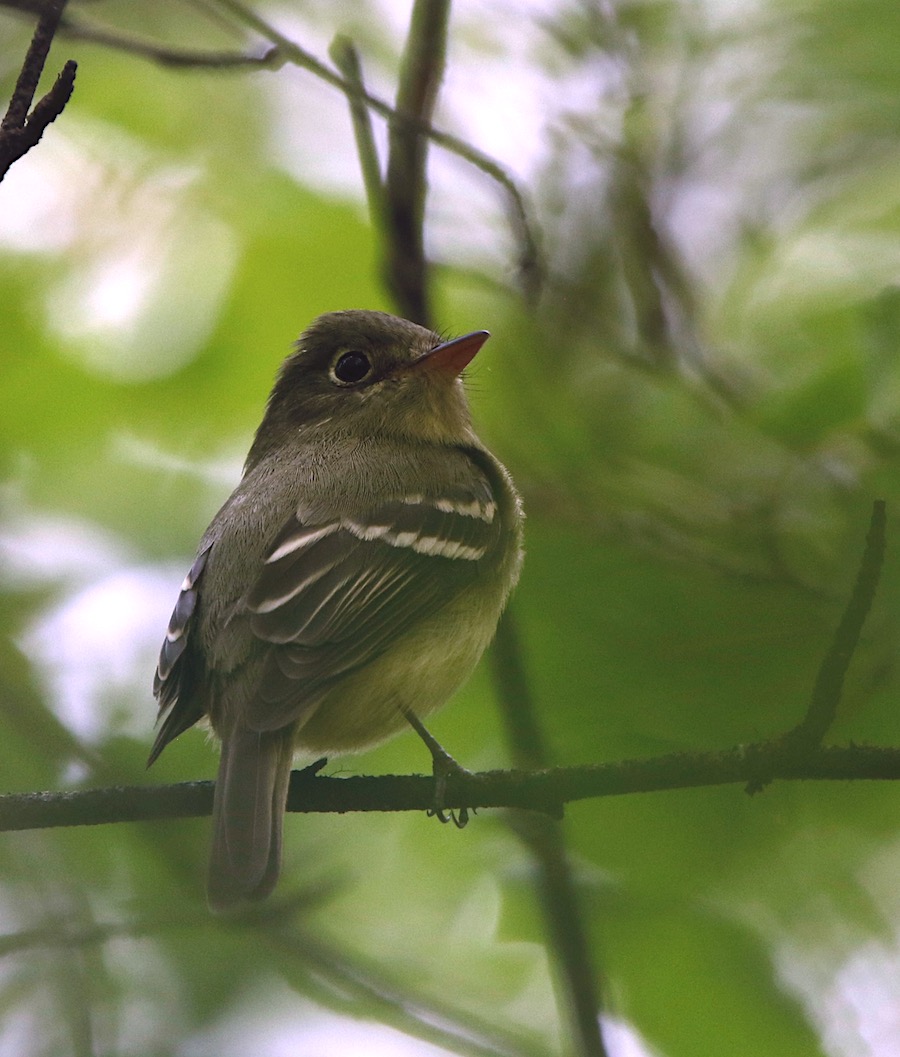
as well as a rare (in Alaska) Yellow-bellied Flycatcher; both species (and the Hammond's Flycatcher that we found north of Fairbanks as well) were write-ins for the tours cummulative list which stretches back over two decades of tours.
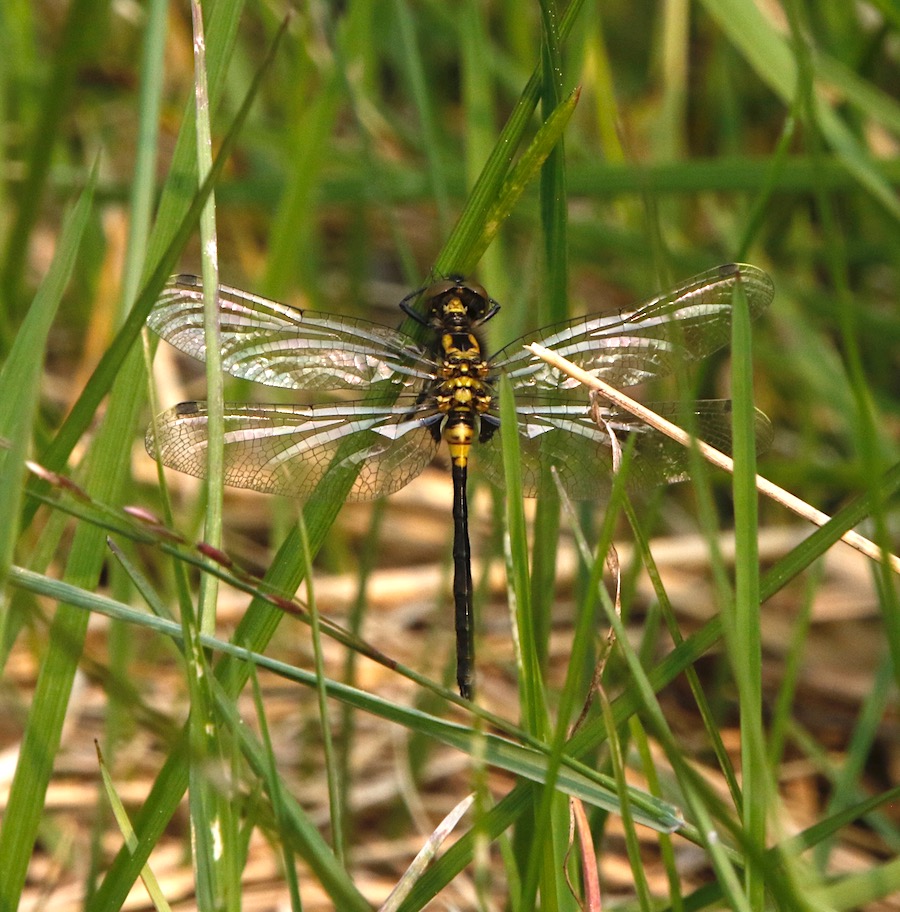
A bit south of Fairbanks we turned up this handsome Canada Whiteface, a scarce species in the state that before this sighting was only known from one location.
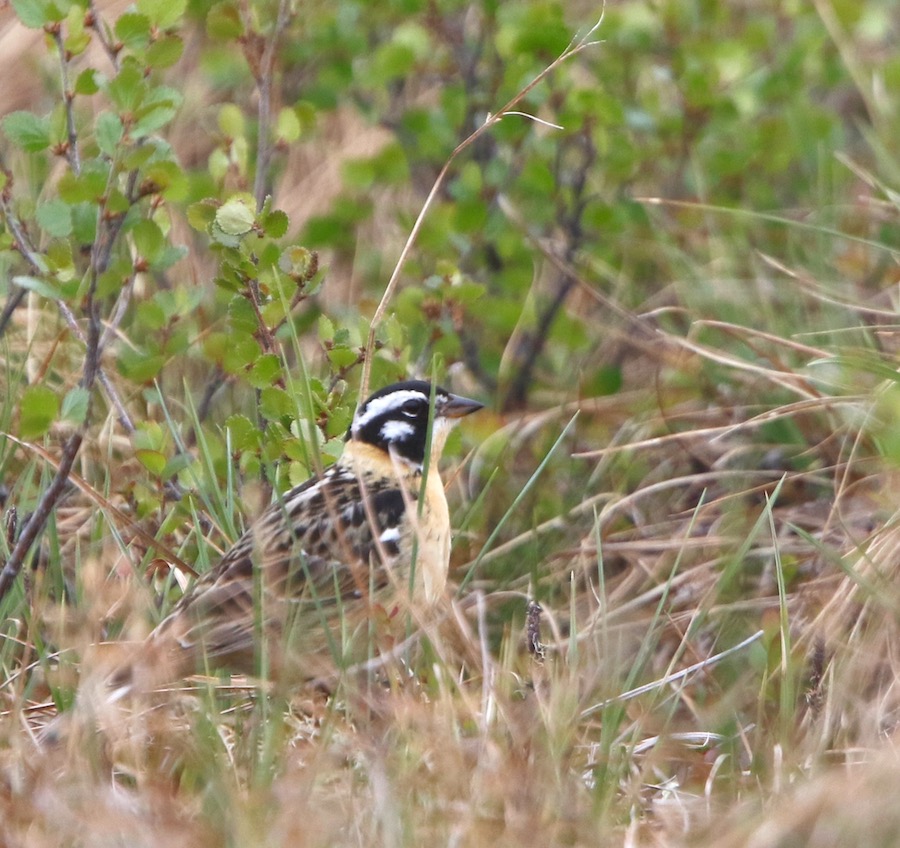
On the Denali Highway we enjoyed a close-up experience with the wily but stunning Smith's Longspur as well as
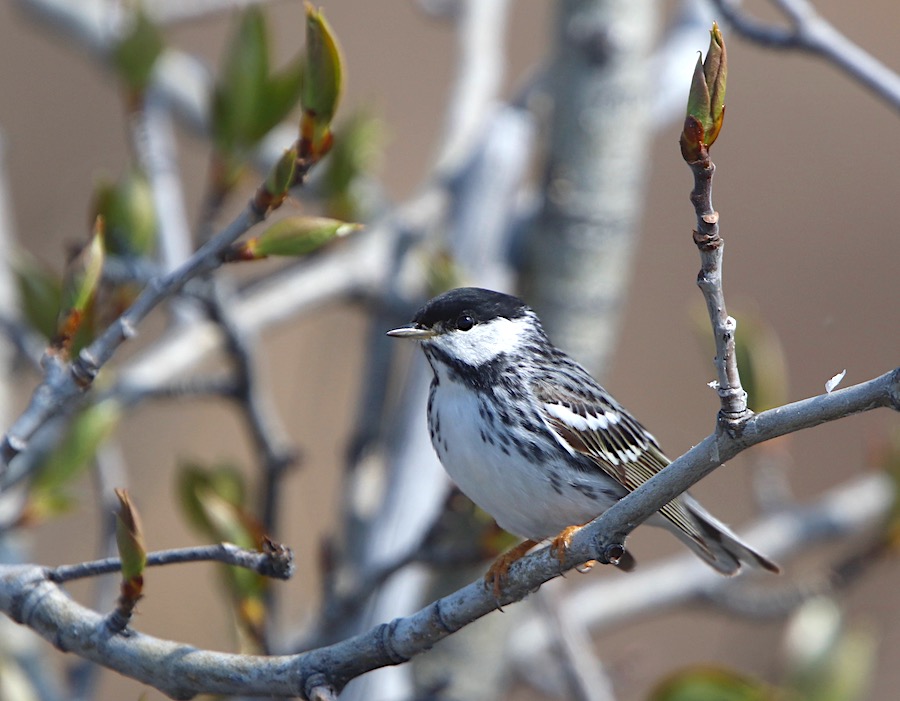 territorial Blackpoll Warblers
territorial Blackpoll Warblers
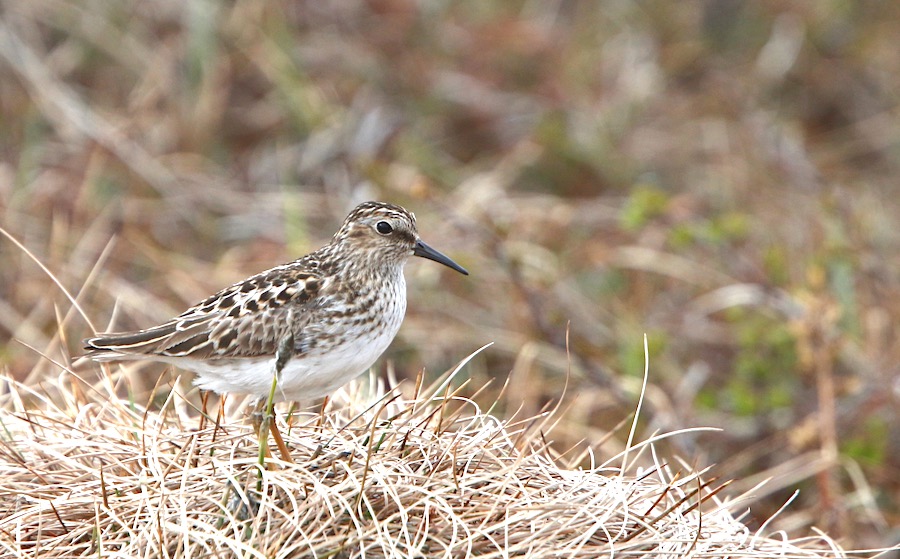 and Least Sandpipers (and a great encounter with a Northern Hawk-Owl)
and Least Sandpipers (and a great encounter with a Northern Hawk-Owl)
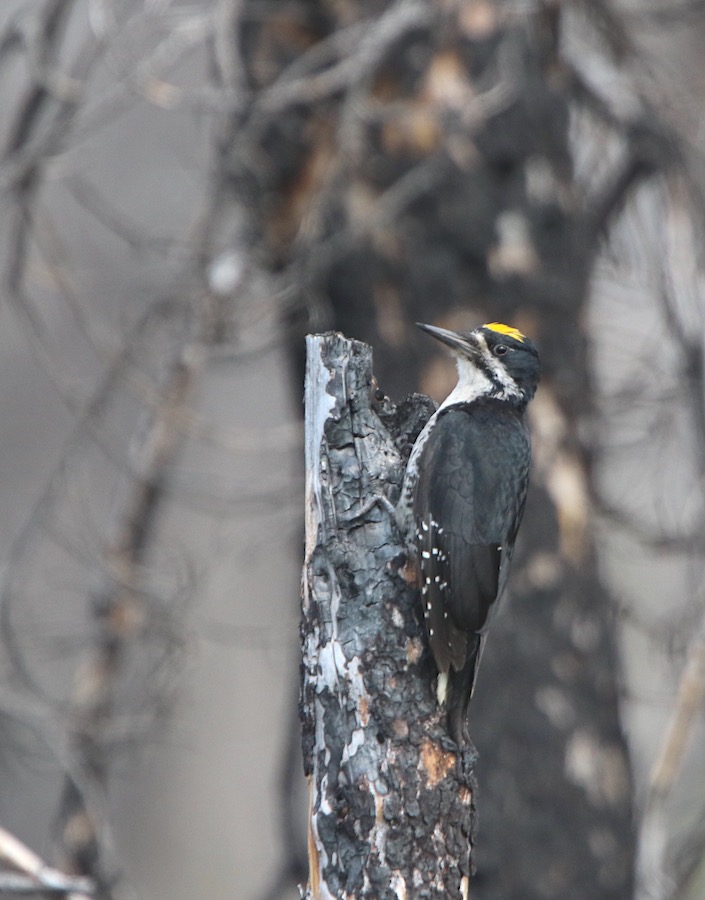
and as we drove south back to Anchorage we stopped for a very rewarding Black-backed Woodpecker that was hammering away on trees in a recently burnt patch of forest.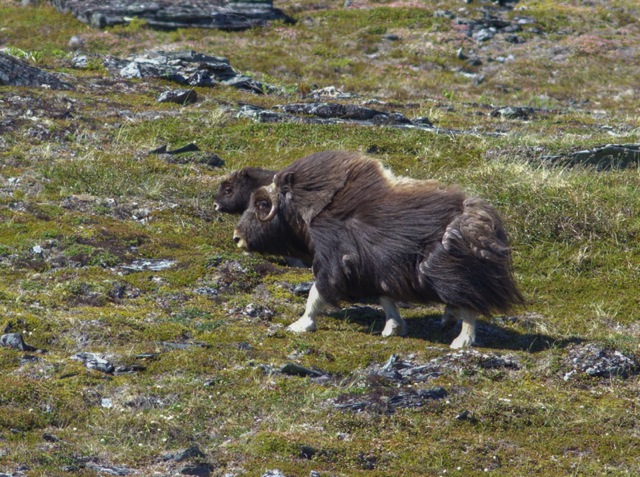
Out in Nome the birding really kicked into high gear, with roving Muskox,
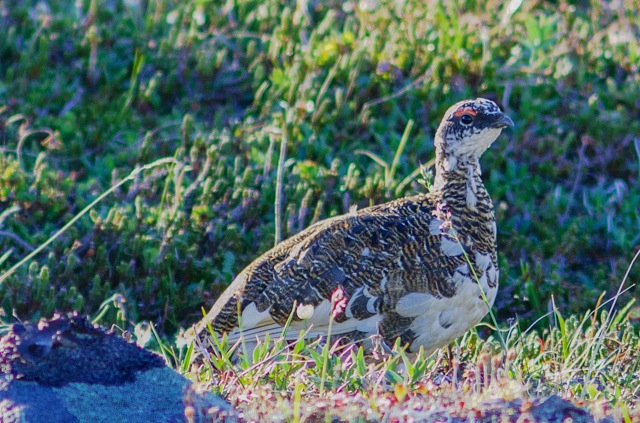
close views of Willow and Rock Ptarmigans,
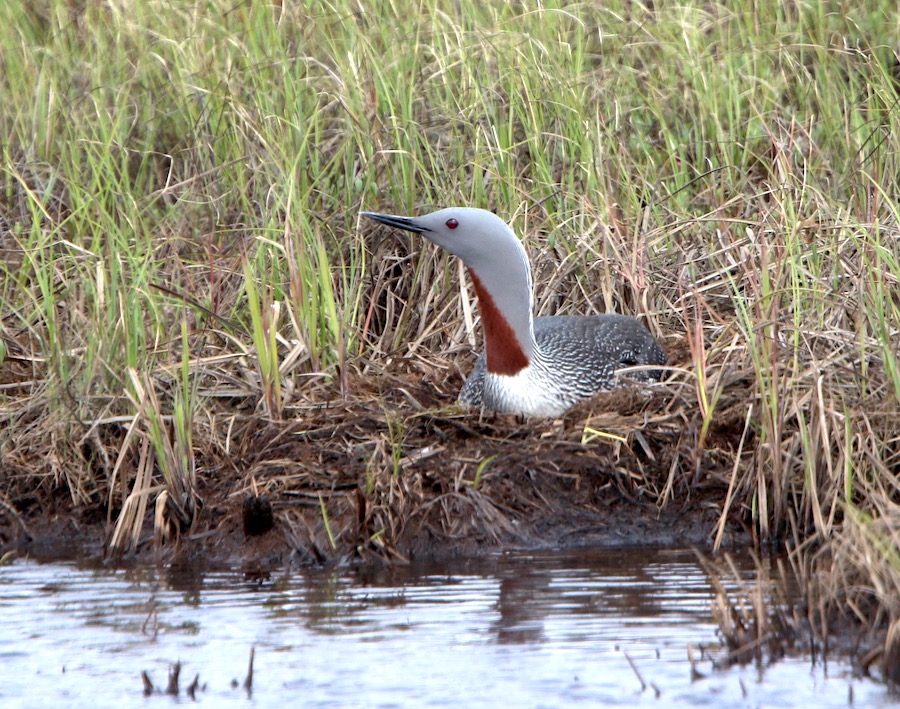
breeding Red-throated
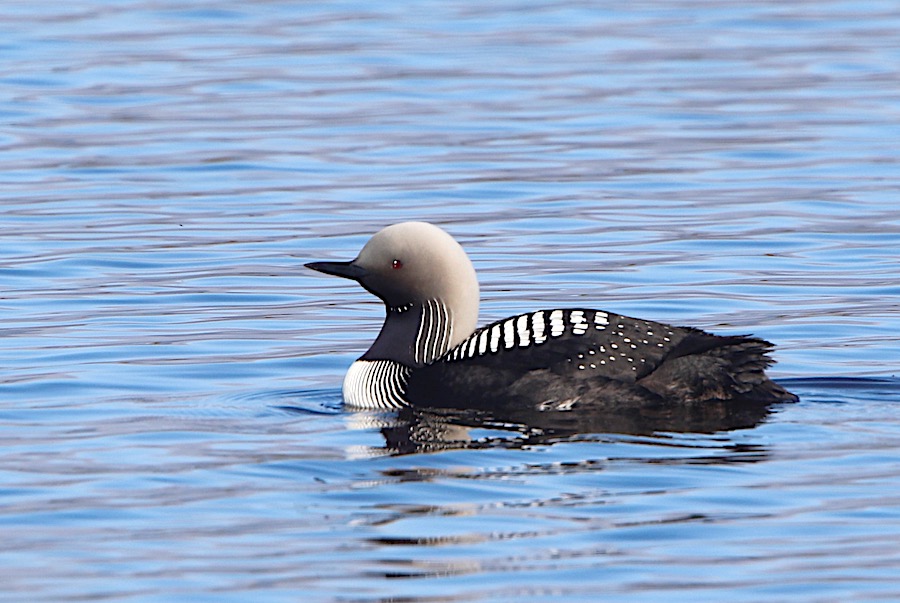 and Pacific Loons
and Pacific Loons
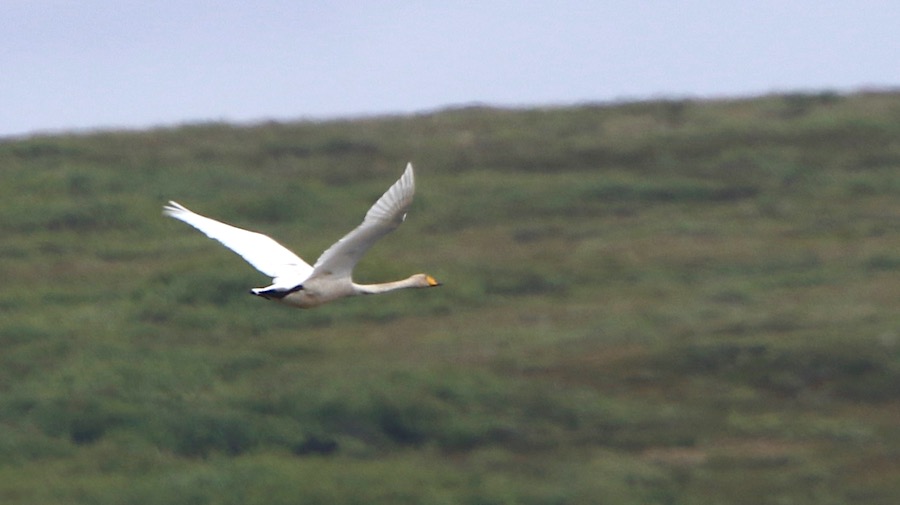
and a completely unexpected Whooper Swan!
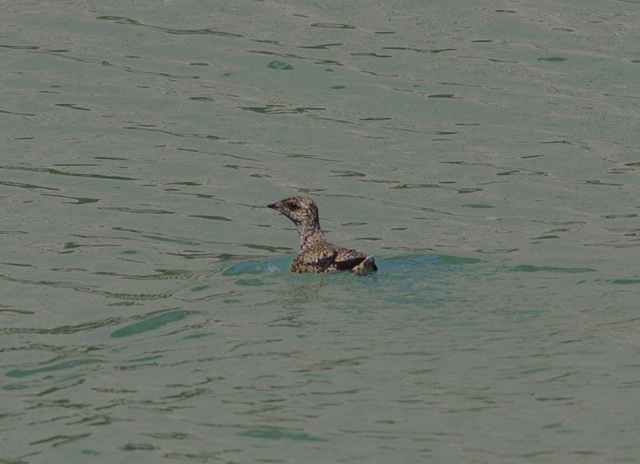
We capped the trip off in Seward, with Kittlitz's Murrelets paddling around in glacial waters,
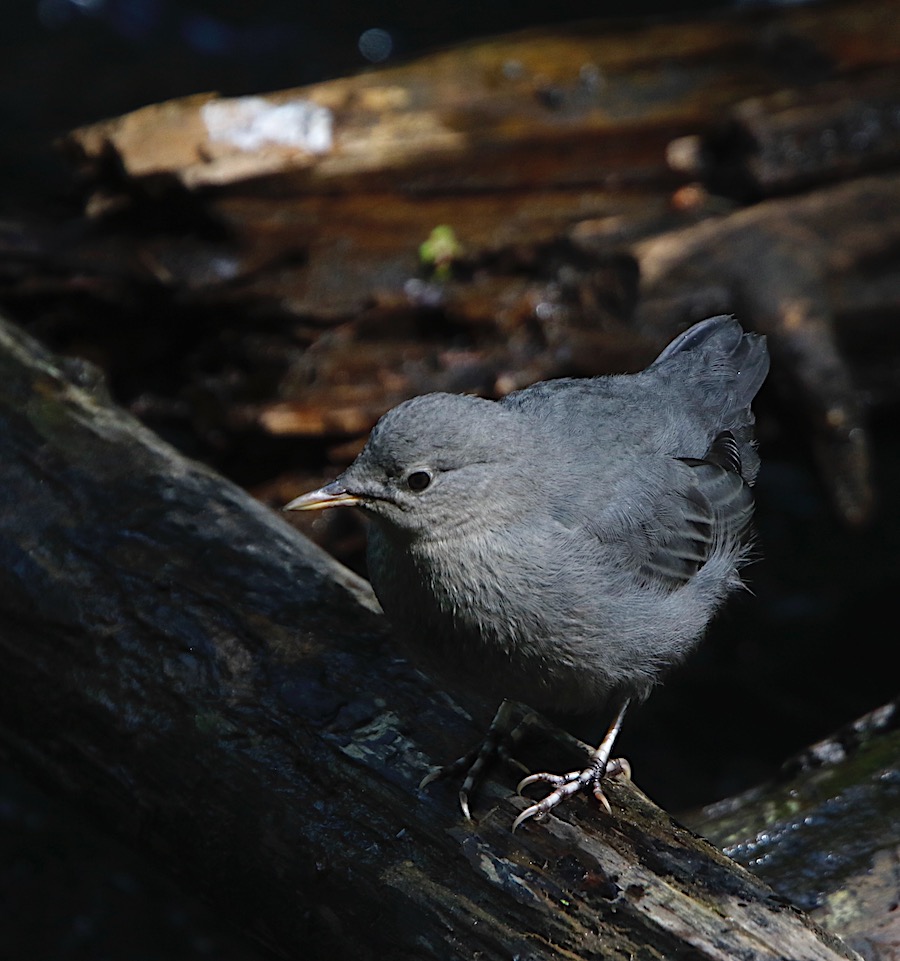 American Dippers on salmon-choked streams
American Dippers on salmon-choked streams
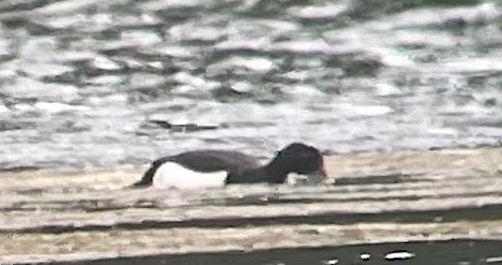
and a stake-out drake Tufted Duck on the Kenai Peninsula.
Barrow was still largely locked in winter, with significant sea ice and a lot of iced-over ponds.
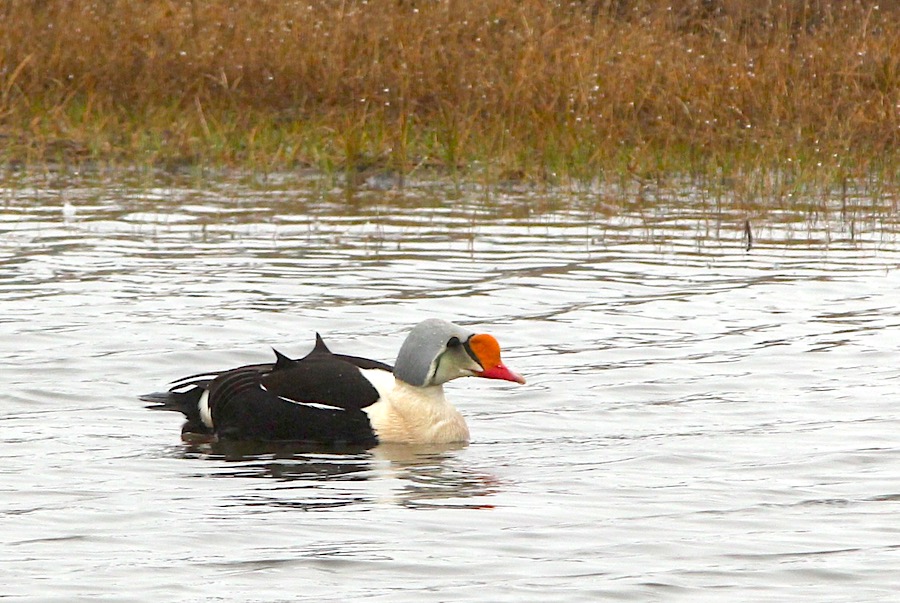 Nevertheless, we turned up the set of ridiculously ornate drake King Eider
Nevertheless, we turned up the set of ridiculously ornate drake King Eider
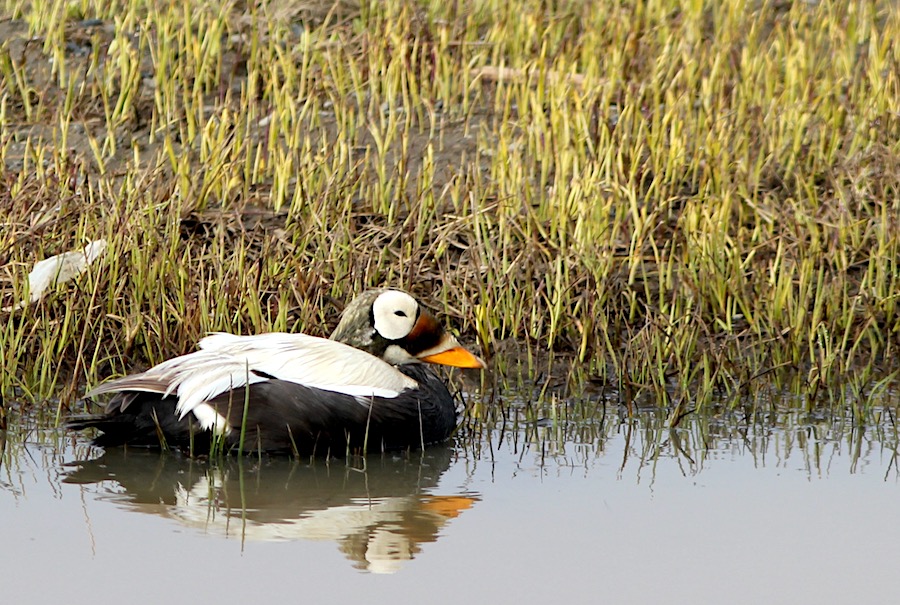
and Spectacled Eiders,
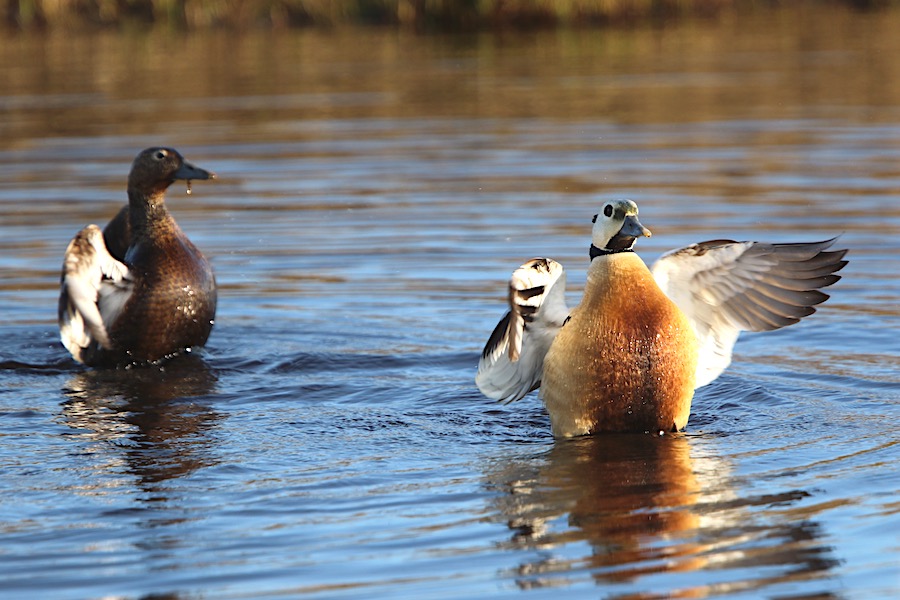
as well as Stellar's Eiders.
Lots of breeding shorebirds including a surprise Red-necked Stint
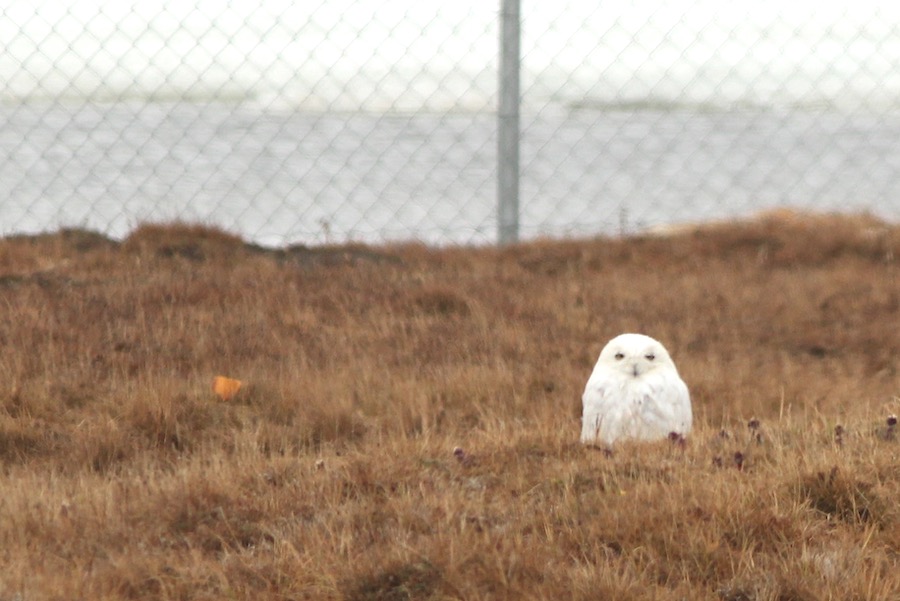
and our obligatory Snowy Owl. A herd of well over 700 Walrus riding the breaking-up sea ice on our last afternoon provided an amazing cap to the trip!
https://secure.wingsbirds.com/tours/alaska-majesty-north/
July 1:
Jake Mohlmann reports from Alaska
We recently wrapped up a successful WINGS tour through some of the most scenic parts of Alaska.
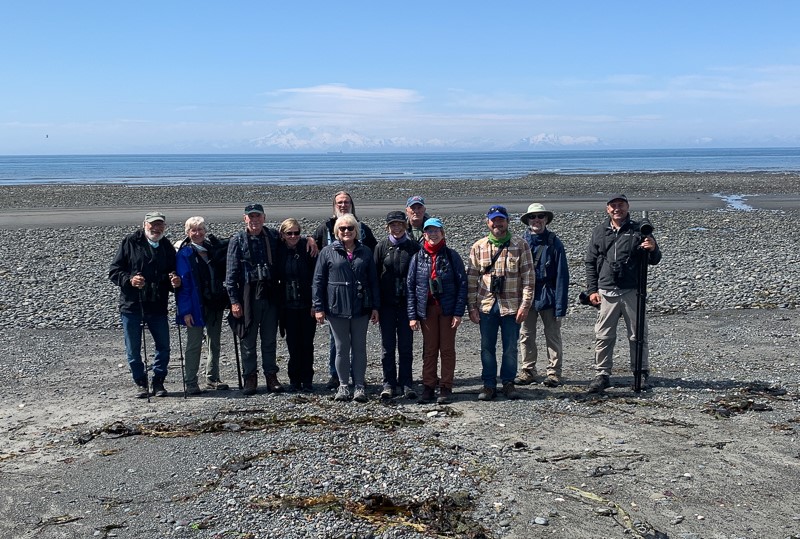
A new area was explored for the first time on this tour as the group searched the shorelines and bays around Homer, a scenic coastal town replete with its famous spit.
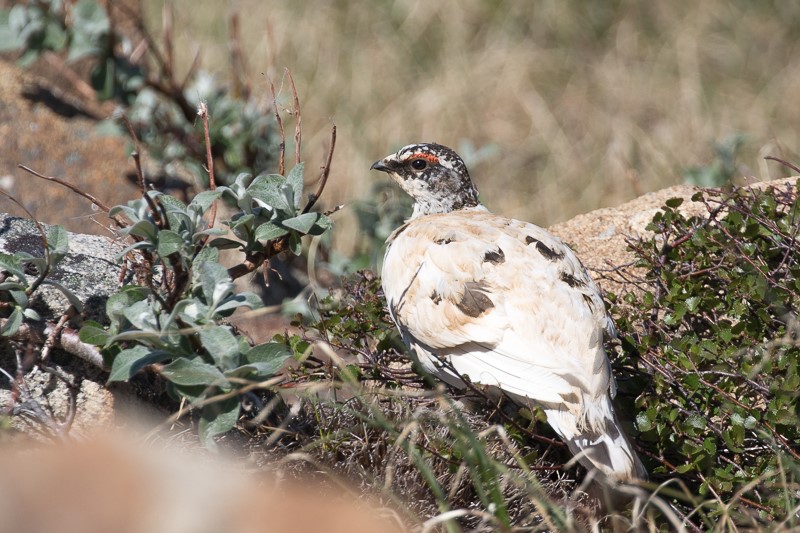
In Nome we searched the other-worldly rocky tundra near Woolly Lagoon for a couple of hours and eventually were rewarded with what some voted the bird of the trip when Greg spotted a Rock Ptarmigan trying its best to blend in to the surrounding landscape.
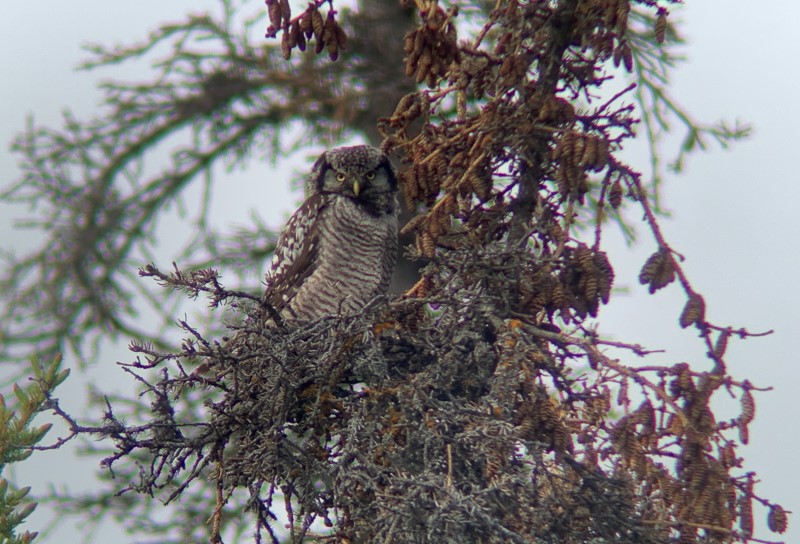
Along the Denali Highway several highlights were tallied, including a perched Northern Hawk Owl that was being harassed by a mob of American Robins and Varied Thrushes that were obviously upset this raptor was perched nearby.
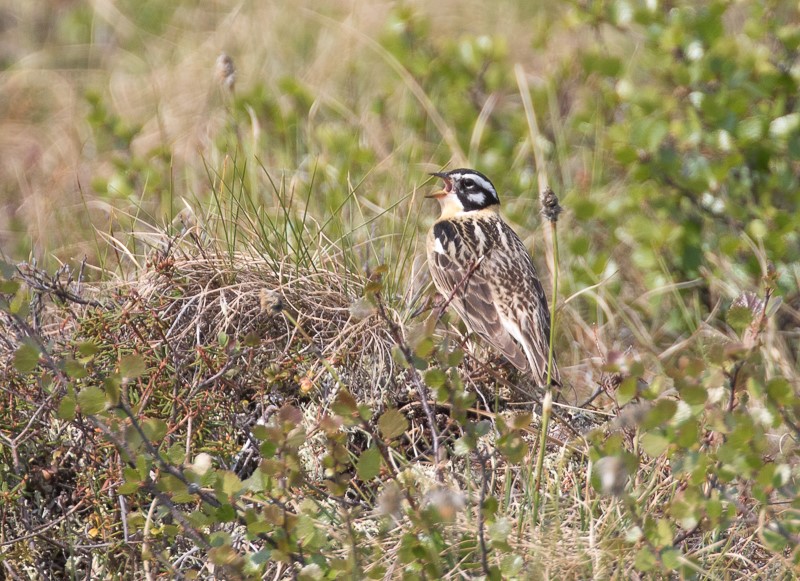
We strolled through the hummocky tundra a mile or so from the road to an area where after some searching tracked down a dapper male Smith’s Longspur newly arrived on its breeding grounds.
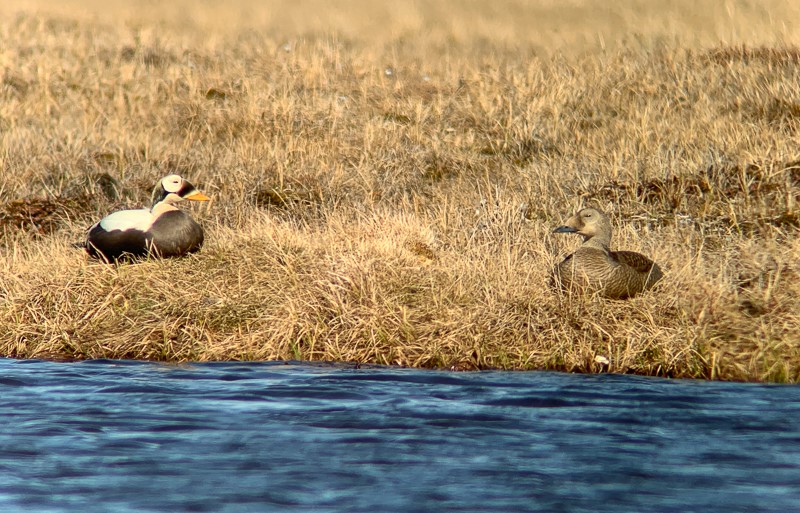
In Utquiagvik the ice was packed for a mile up to the beach which limited our seawatching, but this gave us extra time to get a more intimate experience with the waterfowl staging for breeding grounds including a very confiding pair of Spectacled Eiders.
June 20:
Ethan Kistler reports:
The Minnesota and North Dakota tour went beyond expectations. We dodged most of the rain, had fantastic sightings, and an overall wonderful trip. On the warbler front, we tallied 25 species including the holy grail - Connecticut - along with Cerulean, Hooded, Mourning, and Golden-winged. Sparrows didn’t disappoint either with our tally reaching 17 species including beauties such as Henslow’s, LeConte’s, Nelson’s, and Baird’s. The Northwoods provided point-blank views of a gorgeous pair of Great Gray Owls while the potholes and prairies region, after some much needed rain, was alive with vast numbers of waterfowl, grebes, and shorebirds along with some specials including Yellow Rail, Greater Prairie-Chicken, and Sprague’s Pipit. It was the kind of trip you could always hope for!
This American Bittern was right along a rural road in North Dakota. When we stopped, it immediately 'froze' hoping we didn't see it.
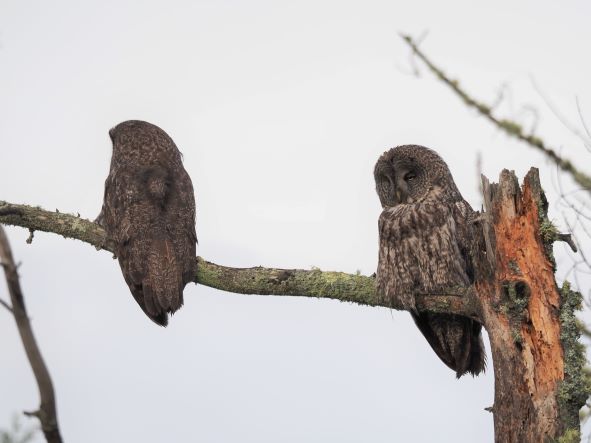
One of the first species we saw upon arriving at Sax-Zim Bog was this pair of Great Gray Owls, which perched conspicuously near the road allowing for extended views.
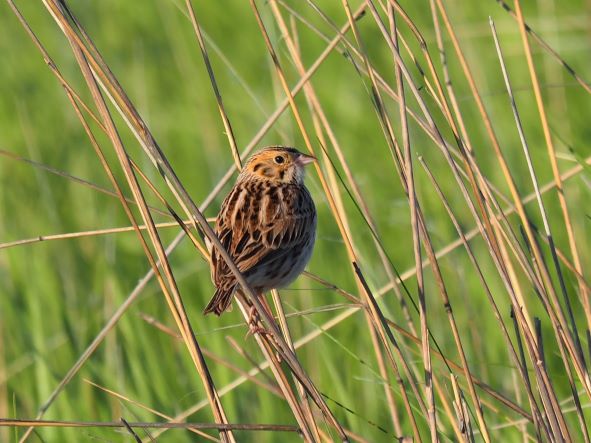
This Baird's Sparrow was already singing upon our arrival.
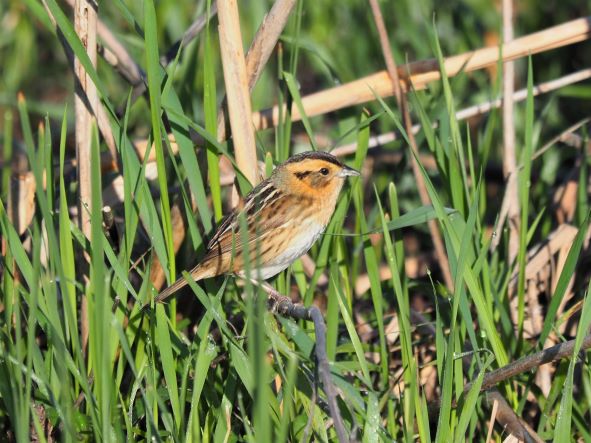
The gorgeous Nelson's Sparrow was very obliging for photos.
May 17:
John Muddeman reports from Spain:
We have just finished a 14-day, cross-Spain tour, traversing a wealth of bird and wildlife rich habitats and landscapes. This diversity guarantees excellent opportunities to see a fine selection of the most iconic birds in Iberia as well as sampling a little of its cuisine and even a couple of historic sites on the way. Indeed, over 230 bird species were recorded by the group, plus an unusually diverse number of mammals. The weather was just about perfect, if a touch hot at times, but following on the heels of an unusually cold and quite wet spring, this worked very much in our favor, especially in the lush north. We started in the Strait of Gibraltar, where European Honey Buzzards were arriving in droves and two of Europe's rarest birds, a Common bulbul and a small flourishing colony of Northern Bald Ibis were top of the bill. Moving westwards, the coastal salinas and wetlands came up trumps with dapper Slender-billed Gulls and a wealth of shorebirds, plus a few very special 'Iberian specials' in the form of displaying White-headed Ducks, discrete Marbled Ducks and feisty Red-knobbed Coots. The steppic birds in the huge plains of Extremadura delighted with European Roller, Great and Little Bustard, Pin-tailed and Black-bellied Sandgrouse amongst others, while two Eagle Owl chicks on their nest were a terrific sight! The central Gredos mountains didn't disappoint, with a gorgeous displaying male Bluethroat, plus (now sadly not so) Common Rock Thrush and our first smart male Red-backed Shrike, with the cities of Ávila and Segovia enjoyed briefly en route to fascinating paramo habitat. The weather in the Picos de Europa couldn't have been better for birding the high tops, with Alpine Choughs, Alpine Accentors, White-winged Snowfinches and two Wallcreepers to round-off a fabulous tour!
Tawny Owl
European Honey Buzzard
Northern Bald Ibis
Curlew Sandpipers
White-headed Duck
Black-winged Stilt
Red-knobbed Coots
Short-toed Snake Eagle
Black-bellied Sandgrouse
European Bee-eater
European Roller
Cinereous Vulture
Ortolan Bunting
Group birding
Middle Spotted Woodpecker
European Wildcat
Southern Chamois
White-winged Snowfinch
Alpine Accentor
Alpine Chough
Yellowhammer
May 17:
Gavin Bieber reports from Southeastern Arizona
The 2022 WINGS Spring Arizona tour combined a wealth of the namesake owls and warblers as well as several truly rare species among some of the best scenery on offer in the country. The spring of 2022 was warm and a lot of our lingering wintering birds and earlier migrant species had long since headed north before our tour dates. Despite the rather light presence of migrants, we very much enjoyed the week, tallying an impressive 208 species. Our avian highlights were many. Resident birds such Cactus Wrens, Acorn Woodpecker, Broad-billed Hummingbird, and Steller’s Jay all showed very well. Summer migrants were in excellent form too, with particularly good views of Elegant Trogon, Blue-throated Mountain-Gem and Red-faced Warbler. This tour focuses on night-birding too, and among the three nightjars and seven species of owls we enjoyed this day-roosting Spotted Owl and a nocturnal encounter with Whiskered Screech-Owl. Perhaps the most unique thing this year was our very good luck with vagrant flycatchers. We started the trip with a successful journey into Happy Valley for a Nutting’s Flycatcher, caught up with a cute Tufted Flycatcher in Rucker Canyon mid-tour, and then capped the trip off with a newly discovered Pine Flycatcher high up in the Catalinas. Not all the vagrants were Mexican in origin though, as we found this adult Laughing Gull in Willcox. As is always the case we found a host of non-birds as well, including odonates like Blue-eyed Darner and Gray Sanddragon, and a number of lizards including this bulky male Desert Spiny Lizard. All in all, just a fantastic week in the field!
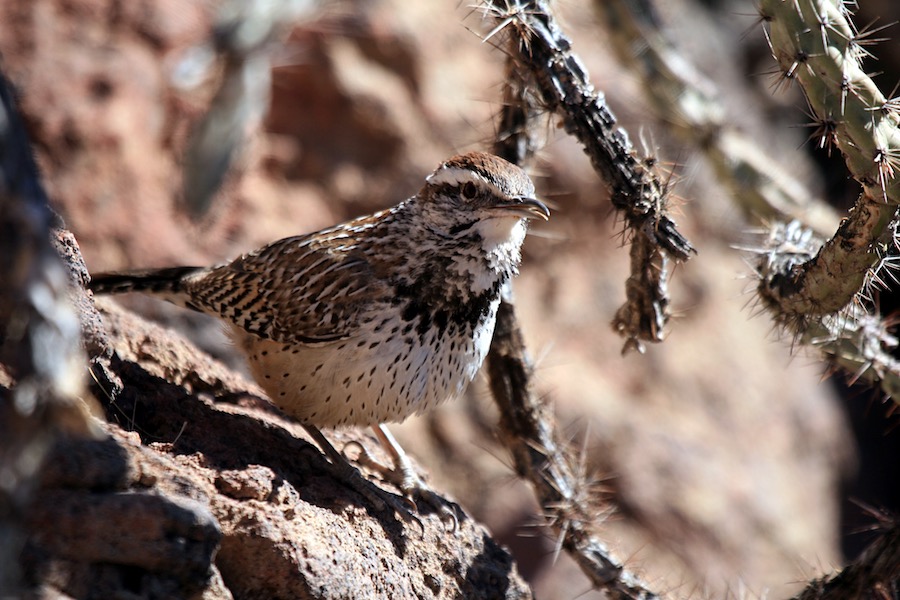
Cactus Wren
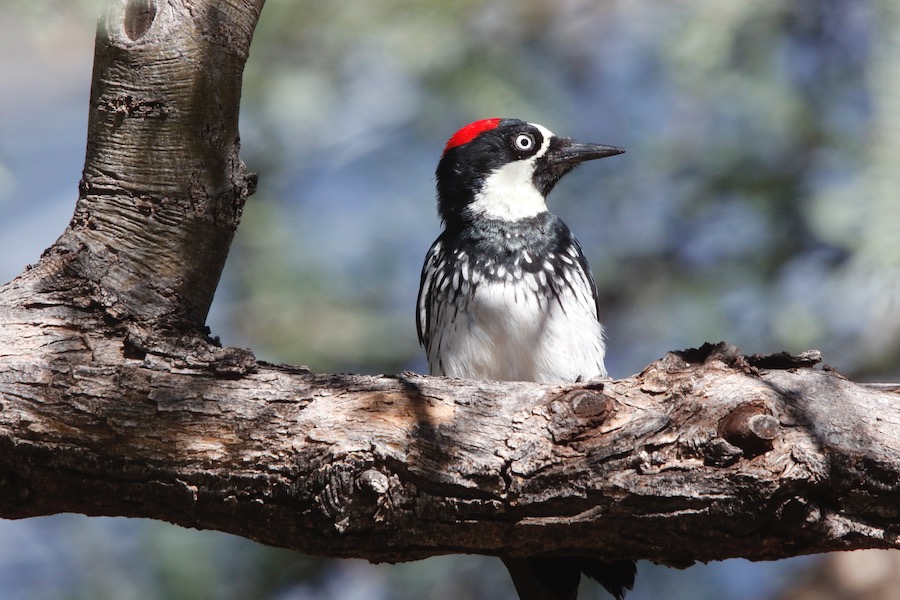
Acorn Woodpecker
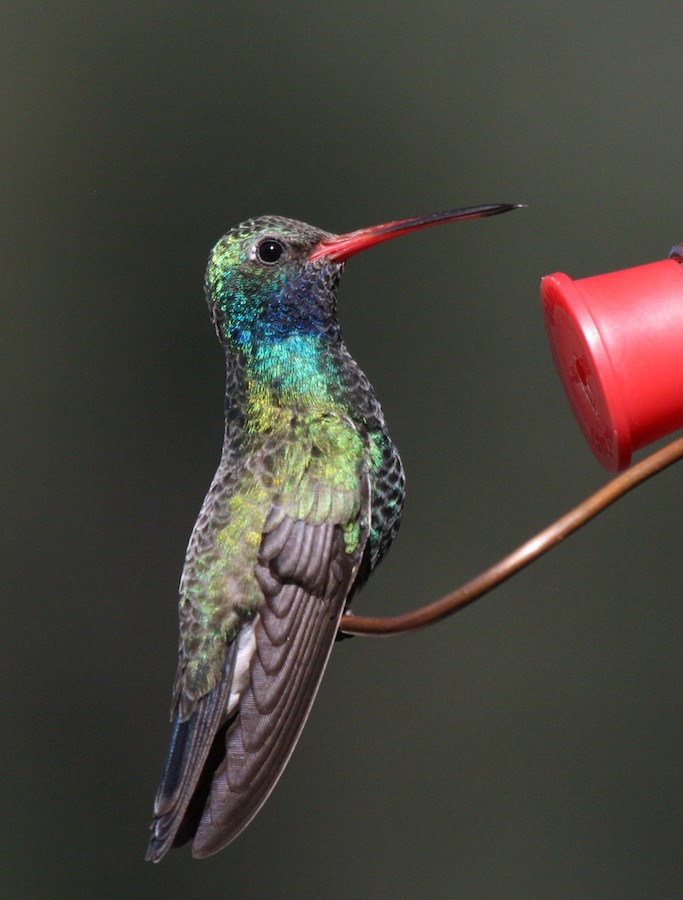
Broad-billed Hummingbird
Steller’s Jay
Elegant Trogon
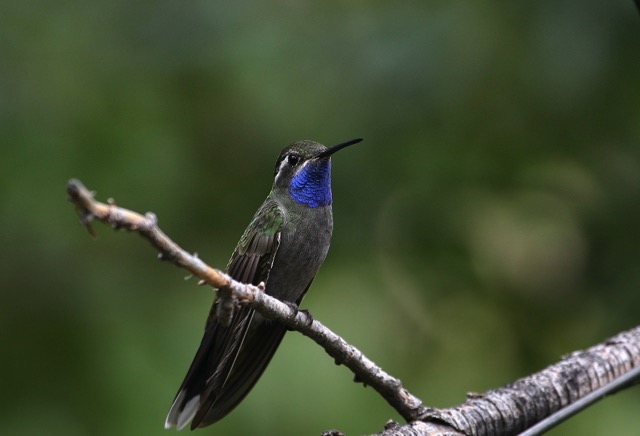
Blue-throated Mountain-Gem
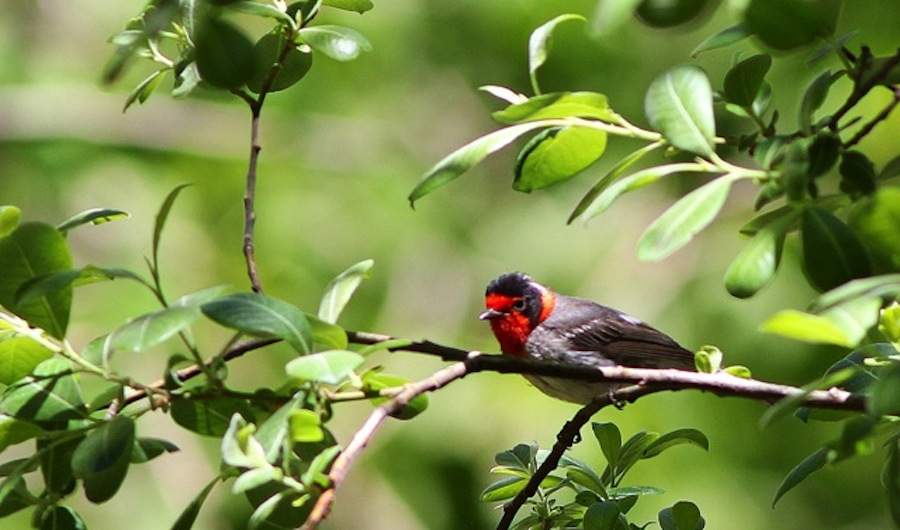
Red-faced Warbler
Spotted Owl
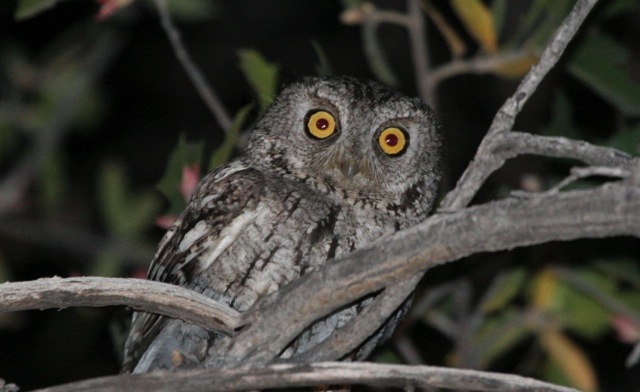
Whiskered Screech-Owl
Nutting’s Flycatcher
Tufted Flycatcher in Rucker Canyon
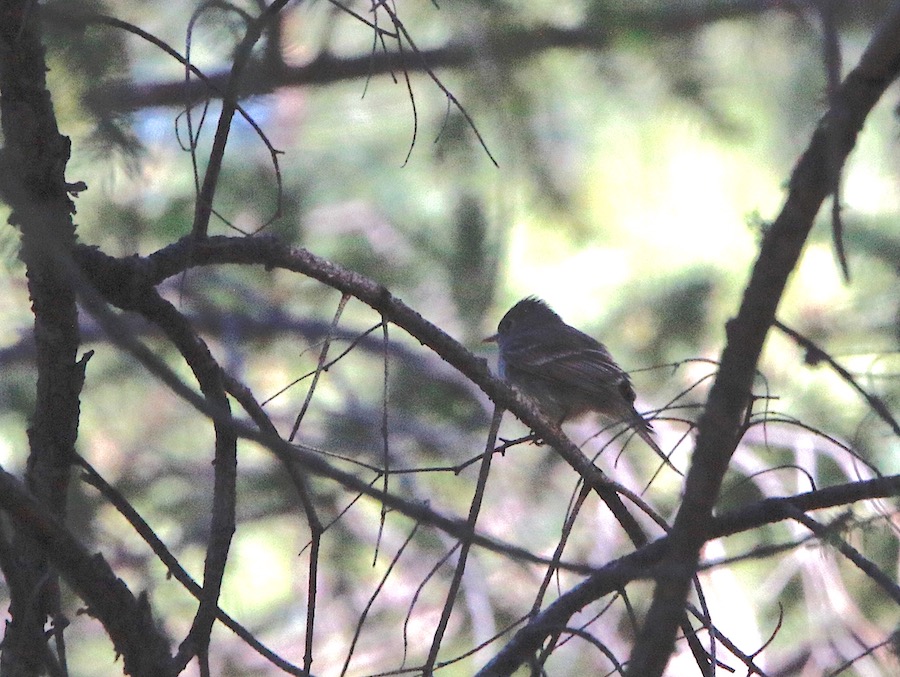
Pine Flycatcher in Catalinas
adult Laughing Gull in Willcox
Blue-eyed Darner
Gray Sanddragon
male Desert Spiny Lizard
May 16:
John Yerger reports from Central Texas.
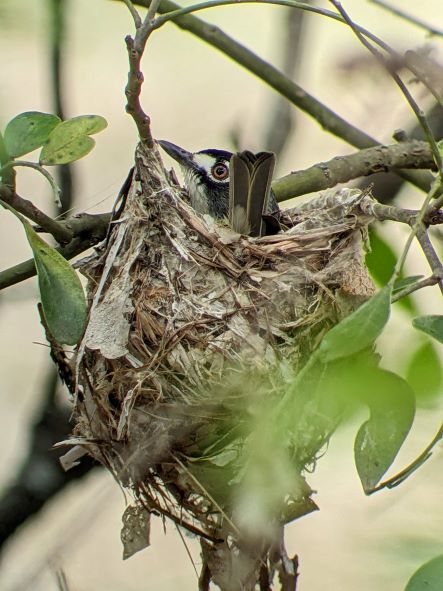
After working hard to secure reasonable views of Black-capped Vireo the day prior, this male at Lost Maples landed on a nest within 10 feet of a popular trail.
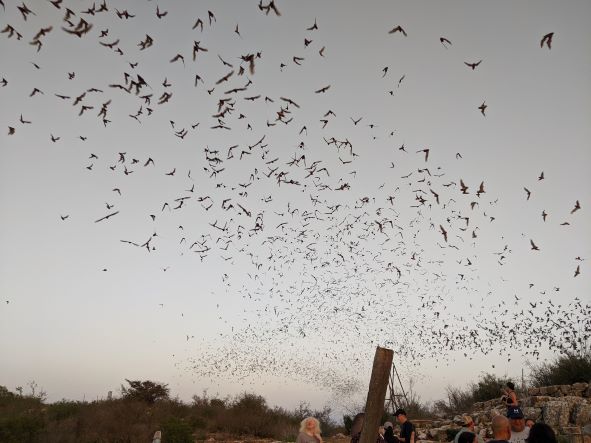
The nightly exodus of 10-12 million Mexican free-tailed bats near Concan was an even more impressive wildlife spectacle than any of us could have imagined!
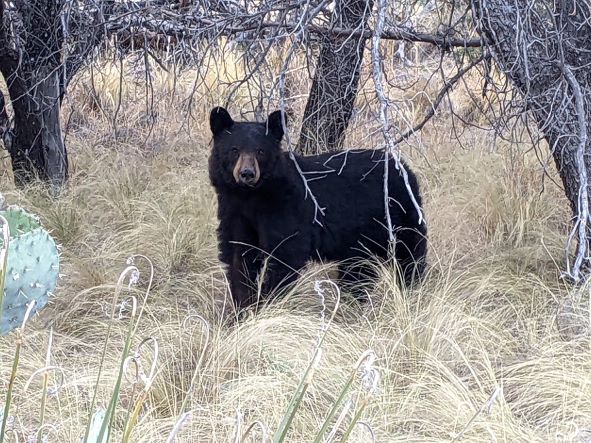
A stunning addition to our mammal list was this black bear, a rare sighting in Texas but becoming more common in the Chisos Mountains of Big Bend National Park, where they only started returning in the 1980's after being extirpated from the area earlier in the century.
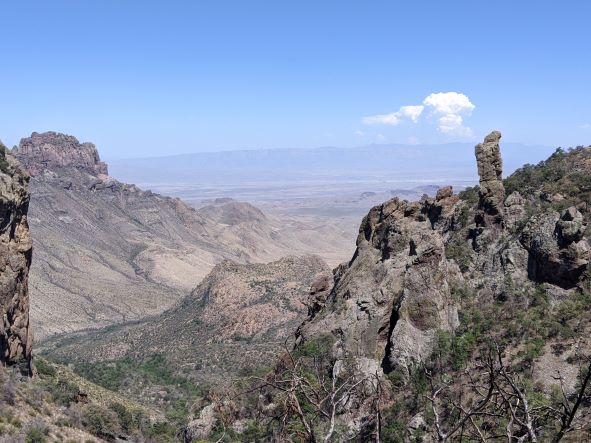
Thunderhead (cumulonimbus cloud) forms behind Boot Rock on the Pinnacles Trail in the Chisos Mountains, a welcome pause for scenery after a tough hike.
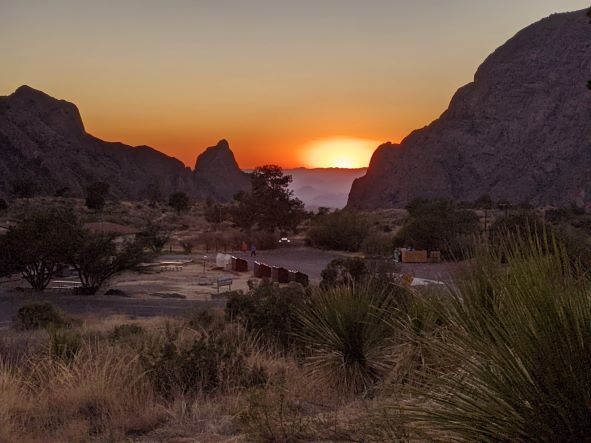
Sunset through "The Window," a must-see event for any visitor to the Big Bend region.
May 4:
Gavin Bieber reports from South Florida:
We just wrapped up our 2022 WINGS Spring Florida tour, a trip which provides a great survey of the habitats and avifauna of this remarkable region. We began over on the states’ west coast, where we found pine specialties like Red-cockaded Woodpecker and Bachman’s Sparrow. Fort Desoto gifted us with a Kirtland’s Warbler, an exceedingly rare species in Florida, as well as a nice selection of more common waders and migrants. We crossed the peninsula along the scenic Alligator Alley, marveling at the beautiful cypress bottomlands, heavily laden with epiphytes and flowers and the upland pine/oak scrub and grassland savannahs of the central peninsula. Out on Key Biscayne we tracked down vagrant Least Grebe and Bahama Mockingbird, and around the urban jungles of Miami we spent some time investigating the large numbers of exotic species that now call South Florida home including the newly minted Egyptian Goose, brightly colored Red-whiskered Bulbul and Spot-breasted Oriole, somewhat dubious-looking Muscovy Ducks and Monk, Yellow-chevroned and Mitred Parakeets. Enroute to the Dry Tortugas we found both Brown and Masked Boobies as well as a few Green Sea Turtles and flying fish. Out at the fort the dry and hot conditions limited the number of migrants present, but we still enjoyed ten species of Warblers, a surprise male Shiny Cowbird, a locally rare Red-shouldered Hawk and excellent views of a perched Black Noddy and several pairs of ethereally white Roseate Terns. The Florida Keys revealed many handsome White-crowned Pigeons, a few Black-whiskered Vireos, loafing Wilson’s Plover, a rather soggy Mangrove Cuckoo, and amazingly close views of displaying Antillean Nighthawks. On our last day, we visited some spectacular wading bird colonies, where breeding Wood Storks, Anhingas and herons were only feet away from us on the boardwalk. It was a busy but great week in what is surely one of most unique landscapes and avifaunas of the United States.
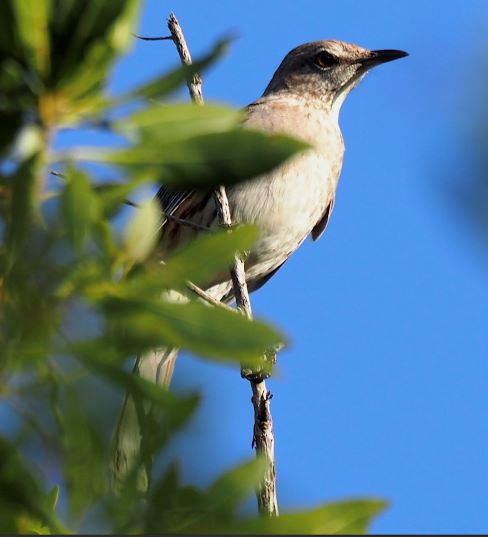
Bahama Mockingbird (photo by Ethan Kistler)
Black (and Brown) Noddies
Black-bellied Whistling-Duck
Brown Booby
Burrowing Owl
Caribbean Reef Squid
French Angelfish
Grey-headed Swamphen
Hispid Cotton Rat
Kirtland's Warbler
Least Bittern
Least Grebe
Limpkin
Mangrove Cuckoo
Northern Curly-tailed Lizard
Osprey
Phantom Darner
Red-cockaded Woodpecker
Roseate Tern
Shiny Cowbird
White-crowned Pigeon
Wood Stork

